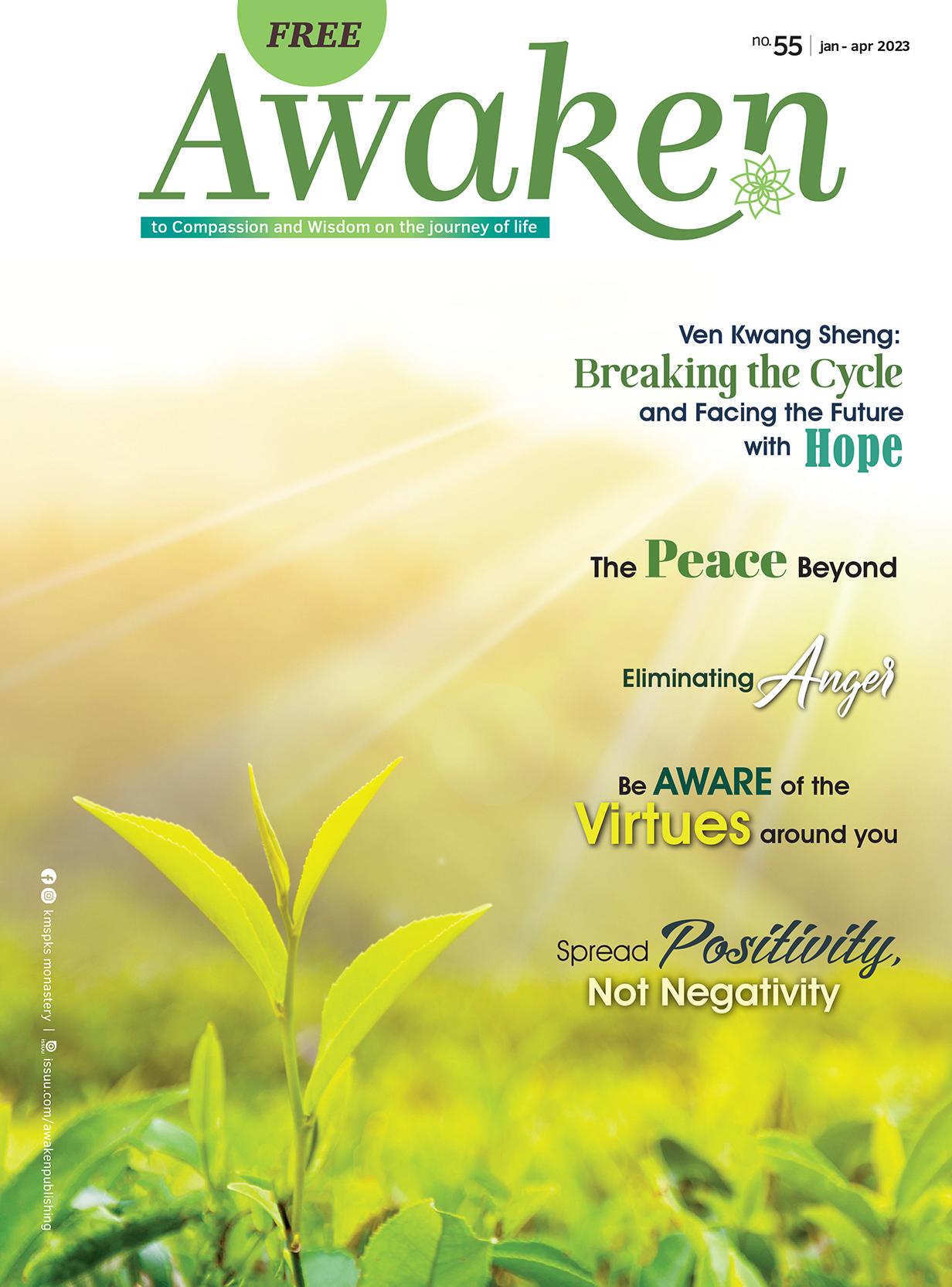

MCI
FOUNDER/MANAGING DIRECTOR
Venerable Sik Kwang Sheng
AWAKEN CHIEF EDITOR Esther Thien

AWAKEN CONTRIBUTORS
Ajahn Jayasaro
Venerable Thubten Chodron
Venerable Shi Jian Xin
Chloe Huang
Felicia Nah Jos Tan Law Wen Hui Oh Puay Fong Susan Grifth-Jones Sarah Napthali Robert Yeo Wong Kee Yew GRAPHIC DESIGNER Frankie Chew AD


Unique Colour Separation Pte Ltd
Blk 9 Kallang Place #06-01 Singapore 339154 Tel: 6292 0138
PUBLISHER
Awaken Publishing and Design Tel: 6849 5342 Fax: 6452 8332 e-mail: publication@kmspks.org Website: kmspks.org/awakenonline
KONG MENG SAN PHOR KARK SEE MONASTERY 88 Bright Hill Road Singapore 574117 kmspks.org Tel: 6849 5300
Awaken is owned, published and distributed tri-annually by Kong Meng San Phor Kark See Monastery
COPYRIGHTS & REPRINTS


All material printed in Awaken is protected under the copyright act. All rights reserved. No material may be reproduced in part or in whole by any means, electronic or mechanical and retrieval system, without the prior written consent of the publisher. Permission may be requested through Awaken Publishing & Design. Tel: 6849 5342. Email: publication@kmspks.org
DISCLAIMER
The views and opinions expressed or implied in Awaken are strictly those of the authors and contributors, and are not necessarily the views of the publisher. Although every reasonable care has been taken to ensure the accuracy and objectivity of the information provided in this publication, the publisher, editors, employees and agents of Awaken shall not be responsible for any actions taken based on the views expressed or information contained within this publication.
kmspks
kmspks_monastery
Published with environmental awareness. Printed in Singapore on eco-friendly paper provided by a certifed sustainable forestry mill.
For advertising enquiries please contact +65 6849 5342

DESIGNER Dennis Chew EDITORIAL COORDINATOR Frankie Chew PRINTER
(P) 071/12/2022
ISSN:
Contents Feature 04 Eliminating Anger Venerable K Piyatissa Thera gives an overview of the methods the Buddha taught to overcome anger. 08 The Peace Beyond In this talk given in 1978, Ajahn Chah explained the true meaning of meditation. Profile 18 Buddhist Tales Interesting Dharma tales and fables that will set your mind thinking 18 Seeing through the Perspectives of Others 19 The Jealous Mentor 20 Facing Death 22 Ponder A first-person account of the little things in life worth reflecting upon 22 Set Yourself Free 23 Spread Positivity, Not Negativity 25 Be Aware of the Virtues Around You 26 Savour A review column that highlights food outlets with delicious vegetarian options 28 Q & A Disadvantages of Anger 31 Recipe Yummy vegetarian recipes to tease your tastebuds 32 Seen, Heard & Read Reviews of life-affirming films, books and music that are beneficial to your well-being 34 Whatʼs New? Find out about the latest products in Awareness Place 35 Calendar 14 “Youʼre Right!?” - Conflict Resolution from a Buddhist Perspective By Venerable Shi Jian Xin Regulars 02 Abbot's Message Breaking the Cycle and Facing the Future with Hope 16 Did You Know? Manjusriʼs Teaching 17 Mindfulness Parenting Handling Conflict & Confrontation 08 02 25
1793-298X
Have you heard of this saying, “Itʼs always darkest before dawn”? The hardship and emotional pain or anxiety you experienced in 2022 will not last forever. The grief and anguish due to the death of a loved one can be ameliorated by the passing of time.
It is natural to feel sad, indignant or fearful when we face the loss of a loved one, have bad experiences or encounter an uncertain phase in life. However, in the process of awakening to our true nature, we understand that everything thatʼs compounded comes to an end, including our sorrow, anger and fear. As we meditate, we let go of pain as we follow the breath. Mindfully, we always return to the breath.
If we can realise that this constantly changing life is just like a dream, if we can see the dreamlike nature of all phenomena and realise our Buddha nature experientially, we will not suffer so much. We will be free from attachment, the fear of death and lifeʼs uncertainties.
There is a Buddhist story that goes: A king is usually recognised through his appearance of ceremonial royal robes and crown. People bow down to him and show respect. If this king flees to another country in times of natural disaster, appearing scruffy and dirty like any other person on the street, the citizens of the other country may not bow or show him respect as he no longer looks like a king.
This story shows that we are conditioned to regard or perceive particular situations, occurrences and life experiences in a certain manner and this is reflected in our behaviour towards them.
The most important lesson is: Can we see the societal conditioning and preconceptions about life in ourselves, and learn to see only what is truly there with wisdom?
If we can have this awareness, then we will face whatever we experience in this changing world with calm, positivity, strength and courage. We will then experience the changes in our lives with wisdom and hope.
Most people want to be happy. Yet, often we harm ourselves with our thoughts and through habits, act in ways that bring about suffering instead.
How we respond determines the string of events and outcomes that happen to us. If we keep repeating the same behaviour, a perpetual cycle of cause and effect, namely karma forms, so we keep getting similar results in our lives.

May everyone cultivate beneficial habits of virtue, contemplation and meditation that foster inner serenity and wisdom, making this world a better place.
Breaking the Cycle
Future Hope and Facing
the with
no.55 | jan-apr 2023 abbot s’
2 |
message
Sik Kwang Sheng (Ven) Abbot, Kong Meng San Phor Kark See Monastery
Anger undermines happiness and burns down forests of merit

In the past year, we have read from the media shocking stories and increasing cases of brutality, from family violence, child abuse and road rage to unprovoked brutal attacks of random strangers.
Uncontrolled anger leading to a desire to inflict pain and harm on another is a key cause in the use of violence. Therefore, having awareness and knowing how to curb anger when it arises in the mind is crucial to avoid suffering and maintain inner serenity (page 4).
Thatʼs why it is critical to apply and practise the Dharma through study, contemplation and meditation (page 28). By allowing the Dharma to arise as a reality within our own minds, we can witness the Dharma, and the peace and wisdom it brings for ourselves. Moreover, we sever the pain and suffering in our minds (pages 8 and 19).
In YouʼreRight!?‒ConflictResolutionfrom aBuddhistPerspective, Venerable Jian Xin reminded us that being kind, respectful and harmonious is more vital than being right, and that we should focus on our similarities in the face of conflicts with our neighbours (page 14). We should understand the perspectives of others with compassion and wisdom (page 18).
At home, during moments of conflicts with our loved ones, we should also practise skilful speech: words that are truthful, kind, gentle and helpful (page 17).
If you need more resources to learn Buddhist techniques to help you overcome anger, check out the books on page 33.
All Dharma practices and offerings should be made to the Triple Gem with the purpose of awakening the mind and liberating all sentient beings (page 16),because death comes to all (page 20). None of our worldly concerns: power, money, status that caused the conflict matter when we die (page 23).
To make our lives meaningful, we should spread positivity, not negativity (page 24).We should also train ourselves to be aware of the virtue shown by people around us, opening our eyes to the ordinary, everyday goodness all around us (page 25).
All the seeds we have planted in our minds, good or bad, will sprout when the conditions are ripe.
So let us consciously spread the good and wholesome in the New Year of 2023! May the minds of all beings become more positive and uplifted, even in the most trying circumstances!
Let us proactively diffuse the soothing fragrance of kindness and sprout seeds of goodwill. May the lineage of the Triple Gem continue uninterrupted!
Yours in the Dharma, Esther Thien

edi t or’ s no t
3 no.55 | jan-apr 2023 |
e
f ea tu re
Leading a life of moral integrity
The ultimate goal of Buddhism is the deathless condition of Nibbana, the sole reality. Hence, one who aspires to that state should renounce mundane pursuits and attachments, which are ephemeral, to pursue that reality. However there are very few who are mature enough to develop themselves to achieve that state in this life. Thus the Buddha does not force the life of renunciation on those who lack the spiritual capacity to embark upon the higher life.
Hence, one should follow the path of mundane practice of which there are two advantages obtainable in this very life, and in future lives, as steps on the path to the spiritual life. Although one may enjoy the pleasures of life, one must regard one's body as an instrument with which to practise virtue for the benefit of oneself
and others. In short, one should live a useful life of moral integrity, simplicity and paucity of wants.
Regarding the acquisition of wealth, the Buddha said: “One must be diligent and energetic,” and on the safeguarding of oneʼs wealth, “one must be mindful and economical.”
The eight ways to curb anger

It is possible that even the life of such a man may somehow or other be disturbed and harassed as a result of the actions of other “unskilful” men. Although this might induce him to abandon his chosen path, it is at such times that he must not forget the steps to be taken for the purpose of establishing peace.
We must not forget that the whole spirit of Buddhism is one of peace. In the calm and placid atmosphere of the Buddhaʼs teachings, there is every chance, every possibility, of removing hatred, jealousy and violence from our mind.
Generally there are eight ways to curb or control our anger.
Eliminating
VenerableKPiyatissaTheragives anoverviewofthemethods theBuddhataughttoovercomeanger.
no.55 | jan-apr 2023 | 4
Anger
First method: Remembering the Buddha’s teachings
The first method is to recollect the teachings of the Buddha. On various occasions the Buddha explained the disadvantages of an uncontrolled temper. Here is one of his admonitions:
Supposesomebanditscatchoneof youandseverhisbodylimbfromlimb withatwo-handedsaw,ifheshould feelangryatthatmoment,heisno followerofmyteaching.

̶ Kakacupama Sutta, Majjhima Nikaya 21
Again: Asalogfromapyre,burntatboth endsandfouledinthemiddle,serves neitherforfirewoodinthevillagenor fortimberintheforest,soissucha wrathfulman.
̶ Anguttara Nikaya II, 95
Furthermore, we may consider the Buddha's advice to be found in the Dhammapada: Heabusedme,hebeatme,he defeatedme,herobbedmeofmy property.Whosoeverharbourssuch thoughtswillneverbeabletostill theirenmity.
Neverindeedishatredstilledby hatred;itwillonlybestilledbynonhatred̶thisisaneternallaw.
̶ Dhp., vv. 4-5
Donotspeakharshlytoanyone. Thosewhoareharshlyspokento mightretaliateagainstyou.Angry wordshurtother'sfeelings,even blowsmayovertakeyouinreturn.
̶ Dhp., v. 133
Forbearanceisthehighest observance.Patienceisthehighest virtue.SotheBuddhassay.
̶ Dhp., v. 184
Letamanremovehisanger.Lethim rootouthispride.Lethimovercome allfettersofpassions.Nosufferings overtakehimwhoneitherclingsto mind-and-bodynorclaimsanything oftheworld.
̶ Dhp., v. 221
Conquerangerbynon-anger. Conquerevilbygood.Conquer miserlinessbygenerosity.Conquer liesbytruthfulness.
̶ Dhp., v. 223
Guardyourmindagainstanoutburst ofwrongfeelings.Keepyourmind controlled.Renouncingevilthoughts, developpurityofmind.
̶ Dhp., v. 233
If by contemplating the advice of the Buddha in this way one cannot curb his anger, then let him try the second method.
Second method: Recalling the other’s positive aspects
Even a bad person may possess some good quality. Some men are evil in mind but speak in deceptive language or slyly perform their deeds in an unsuspecting manner. Some men are coarse only in their language but not in their mind or deeds. Some men are coarse and cruel in their deeds but neither in their speech nor in their mind. Some are soft and kind in mind, speech and deed as well.
Whilst we think thus, our mind will soften and we may even feel kindly towards that person. If we develop this way of thinking we will be able to curb or eliminate our anger towards him.
Third method: Introspection
At times, this method may not be successful and we shall then have to try the third method.
Basically, this entails reflecting thus: “He has done some wrong to me and in so doing has spoiled his mind. Then why should I spoil or impair my own mind because of his foolishness? Sometimes I ignore support or help offered by my relatives; sometimes they even shed tears because of my activities. Being a person of such type myself, why should I not therefore ignore that foolish man's deed? “He has done that wrong, being subject to anger, should I too follow him, making my mind subject to anger? Is it not foolish to imitate him? The man harbouring his hatred destroys himself internally. Why should I, on his account, destroy my inner calm?
Fourth method: Contemplating impermanence
“All things are transient. Both his mind and body are momentary too. The thoughts and the body which did the wrong to me are no longer existing. What I call the same man now are

5 no.55 | jan-apr 2023 |
the collection of thoughts and physical parts that are different from the earlier ones that harmed me although belonging to the same psycho-physical process. Thus, one thought together with one mass of physical parts did me some wrong, and vanished there and then, giving rise to succeeding thoughts and material parts to appear. So with which am I getting angry? With the vanished and disappeared thoughts and physical parts or with the thoughts and material parts which do not do any wrong now? Should I get angry with one thing that is innocent, when the other thing that did me wrong had vanished?
“The so-called 'I' is not the same for two consecutive moments. At the moment the wrong was done there was another thought and another mass of molecules which were regarded as 'I,' whereas what are regarded as 'I' at the present moment are a different thought and collection of molecules, though belonging to the same process. Thus, some other being did wrong to someone else, yet now another gets angry with another. Is this not a ridiculous situation?”
If we scrutinise the exact nature of our life and its happenings in this manner, our anger might subside or vanish there and then.
Fifth method: Reflecting on our kamma
Even if others were angry with us, they could not harm us if there were no latent force of past unwholesome kamma committed by us which took advantage of this opportunity to arouse our adversary. So we are responsible for this harm or loss and not anybody else. At the same time, while we are suffering the result of past kamma, if we, on account of this, should get angry and do any harm now, we accumulate much more unwholesome kamma which would bring us correspondingly unwholesome results. If we recall to mind this law of kamma, our anger may subside immediately.
Sixth method: Following exemplary role models


We can consider such a situation in another way too. As the followers of Buddha, we believe that our Bodhisattva (Bodhisatta) passed through incalculable numbers of lives practising virtues before he attained Buddhahood. The Buddha related the history of some of his past lives as illustrations to teach us how he practised these virtues. The lives of the prince Dhammapala and the ascetic Khantivadi are most illustrative and draw our attention.
At one time, the Bodhisatta had been born as the son of a certain king named Mahapatapa. The child was named Culla Dhammapala.
One day, the Queen sat on a chair stroking her child and did not notice the King passing by. The King thought the Queen was too proud of her child to get up from her chair even when she saw her lord the King approaching. He grew angry and immediately sent for the executioner. When he came, the King ordered him to snatch the child from the Queen's arms and cut off the babyʼs hands, feet and head, which he obeyed instantly. The child, our Bodhisatta, suffered all that with extreme patience. He did not grow ill-tempered or relinquish his impartial love for his cruel father, lamenting mother and the executioner. In this way, he matured in the practice of forbearance and loving-kindness in that life.
At another time, our Bodhisatta was an ascetic well-known for his virtue of forbearance and consequently people named him Khantivadi, the preacher of forbearance. One day, he visited Benares and stayed at the royal pleasure grove. The king happened to visit the grove with his harem then. Seeing the ascetic seated under a tree, the king asked what virtue he was practising, to which the ascetic replied that of forbearance. The king
no.55 | jan-apr 2023 | 6
was a materialist who regarded the practice of virtues to be humbug. So, hearing the words of the ascetic, he sent for the executioner and ordered him to cut off the asceticʼs hands and feet, then questioned the ascetic whether he could still hold to the virtue of forbearance even with the severing of his limbs. The ascetic was not angry at all. Instead, he lay down extending his lovingkindness and holding his forbearance undiminished. He replied to the king that his forbearance and other virtues were not in his limbs but in his mind.
The King, unsuccessful in his attempts to disturb the ascetic's inner peace, grew angrier and kicked the asceticʼs stomach with his heel and went away. Meanwhile, the King's minister came over and, seeing what had happened, bowed before the dying ascetic and begged him saying: "Venerable one, none of us agreed to this cruel act of the king and we are all sorry over what has been done to you by that devilish man. We ask you to curse the king but not us." At this, the ascetic said: "May that king who
has caused my hands and feet to be cut off, as well as all of you, live long in happiness. People who practise virtues like me never get angry." Saying this, he breathed his last. Since the Buddha in his past lives, while still imperfect like us, practised forbearance and loving-kindness to such a high extent, why do we not follow his example?
When we remember and think of similar noble characters of great spirituality, we should be able to bear any harm, unmoved by anger.
Seventh method: Pondering our samsaric connections
Or if we consider the nature of the round of rebirths in this beginningless and infinite universe, we will be able to curb our upsurging anger. For, it is said by the Buddha: “It is not easy to find a being who has not been your mother, your father, your brother, sister, son or daughter.” Hence with regard to the person whom we have now taken for our enemy, we should think: “This one now, in the past has been my mother who bore me in her womb for nine months, gave birth to me, unweariedly cleansed me of impurities, hid me in her bosom, carried me on her hip and nourished me. This one was my father in another life and spent time and energy, engaged in toil and tiresome business, with a view of maintaining me, even sacrificing his life for my sake," and so on. When we ponder over these facts, our arisen anger against our enemy will subside.
Eighth method: Practising and extending lovingkindness

Furthermore, we should reflect on the advantages of developing our mind through the practice of extending
loving-kindness. The Buddha expounded to us eleven advantages from its development. What are the eleven?
1. The person who fully develops loving-kindness sleeps happily.
2. He wakes happily.
3. He experiences no evil dreams.
4. He is beloved by men.
5. He is beloved even by non-human beings.
6. He is protected by the gods.
7. He can be harmed neither by fire, poison or weapons.

8. His mind is quickly composed.
9. His complexion is serene.
10. At the moment of his death, he passes away unbewildered.
11. If he can go no further along the path of realisation, he will at least be reborn in the heavenly abode of the Brahma Devas.
So, by every similar and possible way should we endeavour to quench our anger and at last be able to extend our loving-kindness towards any and every being in the world.
When we are able to curb our anger and control our mind, we should extend from ourselves boundless love as far as we can imagine throughout every direction pervading and touching all living beings with loving-kindness. We should practise this meditation every day at regular times without any break. As a result of this practice, we will be able, one day, to attain to the jhanas or meditative absorptions, comprising four grades which entail the control of sensuality, ill-will and many other passions, bringing at the same time purity, serenity and peace of mind.
©1994 Buddhist Publication Society.
7 no.55 | jan-apr 2023 |
f ea tu re
Practising the Dhamma
It's of great importance that we practise the Dhamma. If we don't practise, then all our knowledge is only superficial, just the outer shell. Itʼs as if we have some sort of fruit but we haven't eaten it yet. Even though we have that fruit in our hand we get no benefit from it. Only by actually eating the fruit can we really know its taste.
The Buddha didn't praise those who merely believe others, he praised the person who knows within himself. Just like with that fruit, if we have tasted it already, we don't have to ask anyone else if it's sweet or sour. Our problems are over. Why are they over? Because we see according to the truth. One who has realised the Dhamma is like one who has realised the sweetness or sourness of the fruit. All doubts are ended right away.
Where are these four things born? They are born within the body and the mind, nowhere else. So why is the Dhamma of the Buddha so broad and expansive? This is to explain these things in a more refined way, to help us see them.
When Siddhattha Gotama was born into the world, before he saw the Dhamma, he was an ordinary person just like us. When he knew what he had to know, the truth of suffering, the cause, the end and the way leading to the end of suffering, he realised the Dhamma and became a perfectly Enlightened Buddha.
When we realise the Dhamma, wherever we sit we know Dhamma, wherever we are we hear the Buddha's teaching. When we understand Dhamma, the Buddha is within our mind, the Dhamma is within our mind, and the practice leading to wisdom is within our own mind. Having the Buddha, the Dhamma and the Sangha within our mind means that whether our actions are good or bad, we know clearly for ourselves their true nature.
Peace
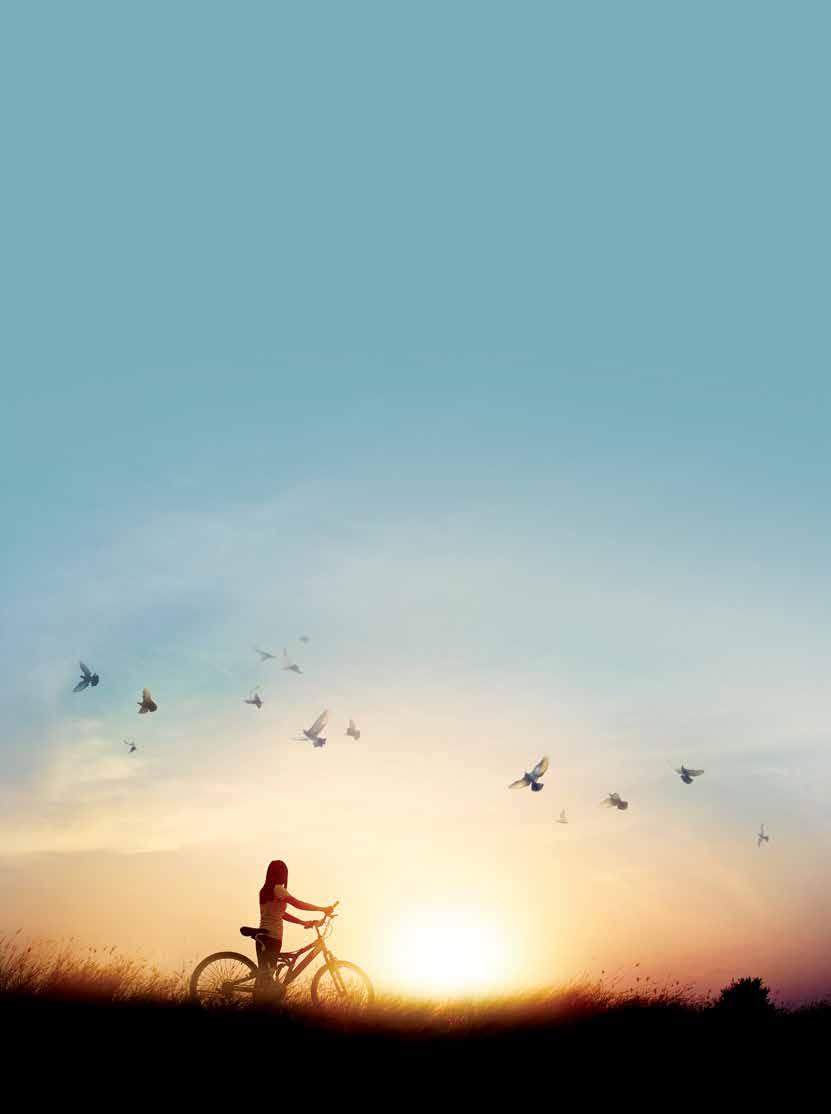
eyond
no.55 | jan-apr 2023 8 |
B
The
Inthistalkgivenin1978, AjahnChahexplainedthetruemeaningofmeditation.
It was thus that the Buddha discarded worldly opinions, he discarded praise and criticism. When people praised or criticised him he just accepted it for what it was. These two things are simply worldly phenomena. He wasn't shaken by them because he knew suffering. He knew that if he believed in that praise or criticism, they would cause him to suffer.
When suffering arises, it agitates us, we feel ill at ease. What is the cause of that suffering? It's because we don't know the Truth. When the cause is present, then suffering arises. Once arisen, we don't know how to stop it. The more we try to stop it, the more it comes. We say, “Don't criticise me”, or “Don't blame me”. This will not stop the suffering.
Seeing the body in the body
The outside is reflected inside also. Some people only know the outside, they don't know the inside. Like when we say to “see the body in the body”. Having seen the outer body is not enough, we must know the body within the body. Then, having investigated the mind, we should know the mind within the mind.
Why should we investigate the body?
What is this “body in the body”? When we say to know the mind, what is this "mind"? If we don't know the mind, then we don't know the things within the mind. This is to be someone who doesn't know suffering, doesn't know the cause, doesn't know the end and doesn't know the way. The things which should help to extinguish suffering don't help, because we get distracted by the things which aggravate it. It's just as if we have an itch on our head and we scratch our leg! If it's our head that's itchy, then we're obviously not going to get much relief. In the same way, when suffering arises, we don't know how to handle it, we don't know the practice leading to the end of suffering.
We take it and put it in our bag and then leave without opening it to see what is inside. When at last we open it ̶ itʼs full of poisonous snakes! Our body is like this. If we just see the shell of it, we say it's fine and beautiful. We forget ourselves. We forget impermanence, unsatisfactoriness and non-self. If we look within this body, it's really repulsive. If we look according to reality, without trying to sugar things over, we'll see that it's really pitiful and wearisome.
Dispassion will arise. This feeling of "disinterest" is not that we feel aversion for the world or anything; it's simply our mind clearing up, our mind letting go. We see things are naturally established just as they are. However we want them to be, they just go about their own way regardless. Whether we laugh or cry, they simply are the way they are. Things which are unstable are unstable; things which are not beautiful are not beautiful.
Letting go
If others say we are good, we don't get lost in it; if they say we are no good, we don't get lost in it; we don't forget ourselves. This way we can be free. "Good" and "evil" are just worldly dhammas or distinctions, they are just states of mind. If we follow them, our mind becomes the world, we just grope in the darkness and don't know the way out. We have not yet mastered ourselves. We try to defeat others, but in doing so we only defeat ourselves. However, if we have mastery over ourselves then we have mastery over all ̶ over all mental formations, sights, sounds, smells, tastes and bodily feelings.
For instance, take this body. If we just see the form of the body, thereʼs no way we can escape suffering because we still don't see the inside of the body, we only see the outside, seeing it as something beautiful and substantial. The Buddha said this is not enough. We should investigate the body within the body. What is in the body? Look closely within! We will see many things inside that surprise us, because even though they are within us, we've never seen them. Wherever we walk, or sit in a car, we carry them with us, but still we don't know them at all!
It's as if we visit some relatives at their house and they give us a present.
So the Buddha said that when we experience sights, sounds, tastes, smells, bodily feelings or mental states, we should release them. When the ear hears sounds, let them go. When the nose smells an odour, let it go... just leave it at the nose! When bodily feelings arise, let go of the like or dislike that follow, let them go back to their birth-place. The same for mental states. All these things, just let them go their way. This is knowing. Whether it's happiness or unhappiness, it's all the same. This is called meditation.
9 no.55 | jan-apr 2023 |
In short, it's just a matter of happiness and unhappiness. Happiness is a pleasant feeling in the mind, unhappiness is just an unpleasant feeling. The Buddha taught to separate this happiness and unhappiness from the mind. The mind is that which knows. Feeling is the characteristic of happiness or unhappiness, like or dislike. When the mind indulges in these things we say that it clings to or takes that happiness and unhappiness to be worthy of holding. That clinging is an action of the mind, that happiness or unhappiness is feeling.
When we say the Buddha told us to separate the mind from the feeling, he didn't literally mean to throw them to different places. He meant that the mind must know happiness and know unhappiness. When sitting in samadhi, for example, and peace fills the mind, then happiness comes but it doesn't reach us, unhappiness comes but doesn't reach us. This is to separate the feeling from the mind. We can compare it to oil and water in a bottle. They don't combine. Even if you try to mix them, the oil remains oil and the water remains water. Why is this so? Because they are of different density.
The natural state of the mind is neither happiness nor unhappiness. When feeling enters the mind, then happiness or unhappiness is born. If we have mindfulness, then we know pleasant feeling as pleasant feeling. The mind which knows will not pick
it up. Happiness is there but it's "outside" the mind, not buried within the mind. The mind simply knows it clearly.
If we separate unhappiness from the mind, does that mean there is no suffering, that we don't experience it? Yes, we experience it, but we know mind as mind, feeling as feeling. We don't cling to that feeling or carry it around. The Buddha separated these things through knowledge. Did he have suffering? He knew the state of suffering but he didn't cling to it, so we say that he cut suffering off. And there was happiness too, but he knew that happiness, if it's not known, is like a poison. He didn't hold on to it. Happiness was there through knowledge, but it didn't exist in his mind. Thus we say that he separated happiness and unhappiness from his mind.
When we say that the Buddha and the Enlightened Ones killed defilements, it's not that they really killed them. If they had killed all defilements then we probably wouldn't have any! They didn't kill defilements; when they knew them for what they are, they let them go. Someone who's stupid will grab them, but the Enlightened Ones knew the defilements in their own minds as poisons, so they swept them out. They swept out the things which caused suffering. One who doesn't know this will see things, such as happiness, as good, and then grab them, but the Buddha just knew them and simply brushed them away.
Clinging leads to unhappiness
When feeling arises for us we indulge in it, that is, the mind carries that happiness and unhappiness around. In fact they are two different things. The activities of mind, pleasant feeling, unpleasant feeling and so on,
are mental impressions. If the mind knows this, it can equally do work involving happiness or unhappiness. Why? Because it knows the truth of these things. Someone who doesn't know the truth sees them as equal.
If you cling to happiness it will be the birth-place of unhappiness later on, because happiness is unstable, it changes all the time. When happiness disappears, unhappiness arises.
The Buddha knew that because both happiness and unhappiness are unsatisfactory, they have the same value. When happiness arose he let it go. He had right practice, seeing that both these things have equal values and drawbacks. They come under the Law of Dhamma, that is, they are unstable and unsatisfactory. Once born, they die. When he saw this, right view arose, the right way of practice became clear.
When the Buddha was newly enlightened, he gave a teaching about indulgence in pleasure and indulgence in pain. "Monks! Indulgence in pleasure is the loose way, indulgence in pain is the tense way." These were the two things that disturbed his practice until the day he was enlightened, because at first he didn't let go of them. When he knew them, he let them go, and so was able to give his first teaching.the truth of suffering
So we say that a meditator should not walk the way of happiness or
no.55 | jan-apr 2023 10 |
unhappiness, rather he should know them. Knowing the truth of suffering, he will know the cause of suffering, the end of suffering and the way leading to the end of suffering. And the way out of suffering is meditation itself. To put it simply, we must be mindful.
become the 'one who knows'. The mind and feeling are just like oil and water ̶ they are in the same bottle but they don't mix. Even if we are sick or in pain, we still know the feeling as feeling, the mind as mind. We know the painful or comfortable states but we don't identify with them. We stay only with peace: the peace beyond both comfort and pain.
You should understand it like this, because if there is no permanent self, then there is no refuge. You must live like this, that is, without happiness and without unhappiness. You stay only with the knowing, you don't carry things around.
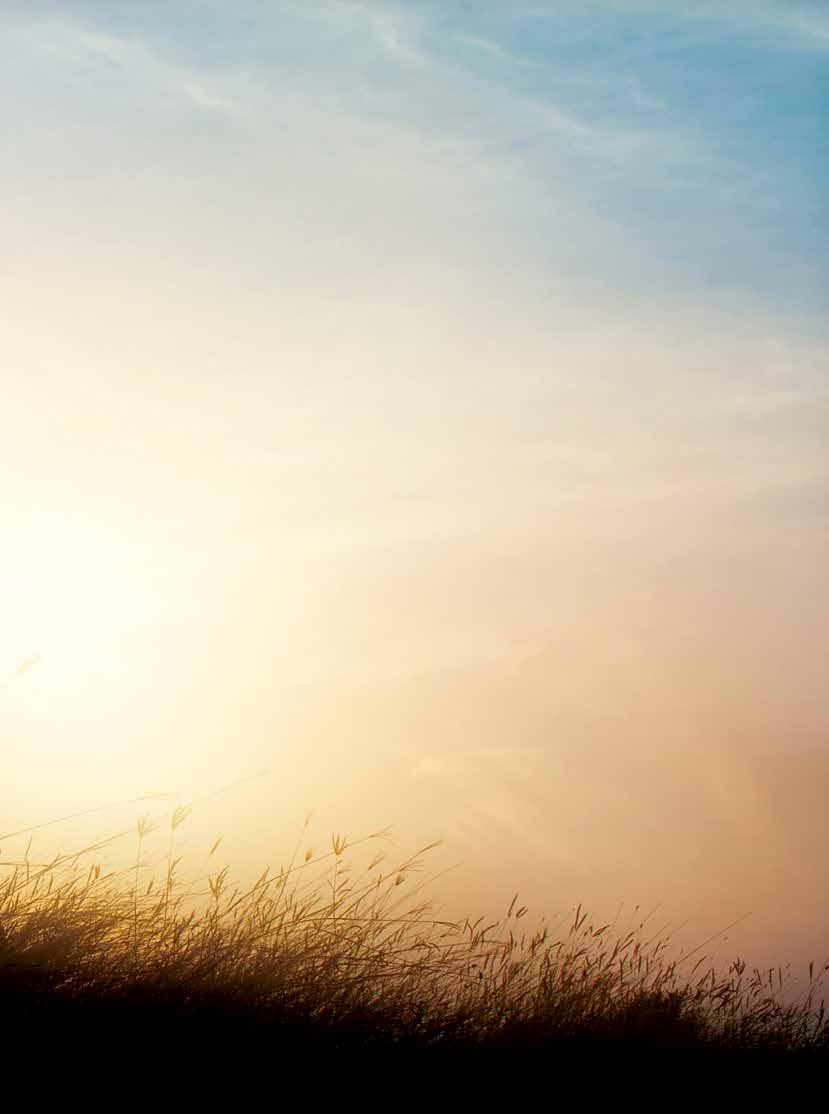
house is one thing, the occupant is the other.
We say that we separate mind and feeling in this way but in fact they are by nature already separate. Our realisation is simply to know this natural separateness according to reality. When we say they are not separated, it's because we're clinging to them through ignorance of the truth.
So the Buddha told us to meditate.
We consider and investigate at all times, in all postures. When a mental impression arises that we like to know it as such, we don't hold it to be anything substantial. It's just happiness. When unhappiness arises we know that it's Indulgence in Pain, it's not the path of a meditator.
This is what we call separating the mind from the feeling. If we are clever we don't attach, we let things be. We
As long as we are still unenlightened all this may sound strange but it doesn't matter, we just set our goal in this direction. The mind is the mind. It meets happiness and unhappiness and we see them as merely that, there's nothing more to it. They are divided, not mixed. If they are all mixed up then we don't know them. It's like living in a house; the house and its occupant are related, but separate. If there is danger in our house we are distressed because we must protect it, but if the house catches fire we get out of it. If painful feeling arises, we get out of it, just like that house. When it's full of fire and we know it, we come running out of it. They are separate things; the
11 no.55 | jan-apr 2023 |
The mind tries to hold onto and keep this knowledge. Why do we try to keep it? Just lose it! And then when it's lost we cry!
If we really know, then there's letting go, letting things be. We know how things are and don't forget ourselves. If it happens that we are sick, we don't get lost in that. Some people think, "This year I was sick the whole time, I couldn't meditate at all." These are the words of a really foolish person. Someone who's sick and dying should really be diligent in his practice. One may say he doesn't trust his body, and so he feels that he can't meditate. If we think like this, then things are difficult. The Buddha didn't teach like that. He said that right here is the place to meditate. When we're sick or almost dying, that's when we can really know and see reality.
Other people say they don't have the chance to meditate because they're too busy. Sometimes school teachers come to see me. They say they have many responsibilities so there's no time to meditate. I ask them, "When you're teaching do you have time to breathe?" They answer, "Yes." "So how can you have time to breathe if the work is so hectic and confusing? Here you are far from Dhamma."
Meditation is to be aware at all times
Actually this practice is just about the mind and its feelings. It's not something that you have to run after or struggle for. Breathing continues while working. Nature takes care of the natural processes ̶
If we have that presence of mind, then whatever work we do will be the very tool which enables us to know right and wrong continually. There's plenty of time to meditate, we just don't fully understand the practice, that's all. While sleeping we breathe, while eating we breathe, don't we? Why don't we have time to meditate? Wherever we are we breathe. If we think like this then our life has as much value as our breath, wherever we are, we have time.
All kinds of thinking are mental conditions, not bodily conditions, so we need simply to have presence of mind, then we will know right and wrong at all times. Standing, walking, sitting and lying, there's plenty of time. We just don't know how to use it properly. Please consider this.
We cannot run away from feeling, we must know it. Feeling is just feeling, happiness is just happiness, unhappiness is just unhappiness. They are simply that. So why should we cling to them? If the mind is clever, simply to hear this is enough to enable us to separate feeling from the mind.

If we investigate like this continuously, the mind will find release, but it's not escaping through ignorance. The mind lets go, but it knows. It doesn't let go through stupidity, not because it doesn't want things to be the way they are. It lets go because it knows according to the truth. This is seeing nature, the reality that's all around us.
and that which was not troublesome, were right there. This world is so confusing, how is it that the Buddha was able to know it? Here we should understand that the Dhamma taught by the Buddha is not beyond our ability. In all postures, we should have presence of mind and selfawareness ̶ and when it's time to sit in meditation, we do that.
We sit in meditation to establish peacefulness and cultivate mental energy. We don't do it in order to play around at anything special. Insight meditation is sitting in samadhi itself. At some places, they say, "Now we are going to sit in samadhi, after that we'll do insight meditation." Don't divide them like this! Tranquillity is the base which gives rise to wisdom; wisdom is the fruit of tranquillity. To say that now we are going to do calm meditation, later we'll do insight ̶ you can't do that! You can only divide them in speech. Just like a knife, the blade is on one side, the back of the blade on the other. You can't divide them. If you pick up one side you get both sides. Tranquillity gives rise to wisdom like this.
Morality is peace
Morality is the father and mother of Dhamma. In the beginning, we must have morality. Morality is peace. This means that there are no wrong doings in body or speech. When we don't do wrong then we don't get agitated; when we don't become agitated then peace and collectedness arise within the mind.
Just to keep trying, going inwards to see clearly. Meditation is like this.
no.55 | jan-apr 2023
When we know this, we are someone who's skilled with the mind, we are skilled with mental impressions. When we are skilled with mental impressions, we are skilled with the world. This is to be a "Knower of the World." The Buddha was someone who clearly knew the world with all its difficulty. He knew the troublesome,

12 |
It's like a mango. When it's a flower, we call it a flower. When it becomes a fruit we call it a mango. When it ripens, we call it a ripe mango. It's all one mango but it continually changes. The big mango grows from the small mango, the small mango becomes a big one. You can call them different fruits or all one. Morality, concentration and wisdom are related like this. In the end, it's all the path that leads to enlightenment.

The mango, from the moment it first appears as a flower, simply grows to ripeness. This is enough, we should see it like this. Whatever others call it, it doesn't matter. Once it's born it grows to old age, and then where does it go? We should contemplate this.
Some people don't want to be old. When they get old, they become regretful. These people shouldn't eat ripe mangoes! Why do we want the mangoes to be ripe? If they're not ripe in time, we ripen them artificially, don't we? Yet when we become old, we are filled with regret. Some people cry, they're afraid to get old or die. If it's like this then they shouldn't eat ripe mangoes, better eat just the flowers! If we can see this, then we can see the Dhamma.
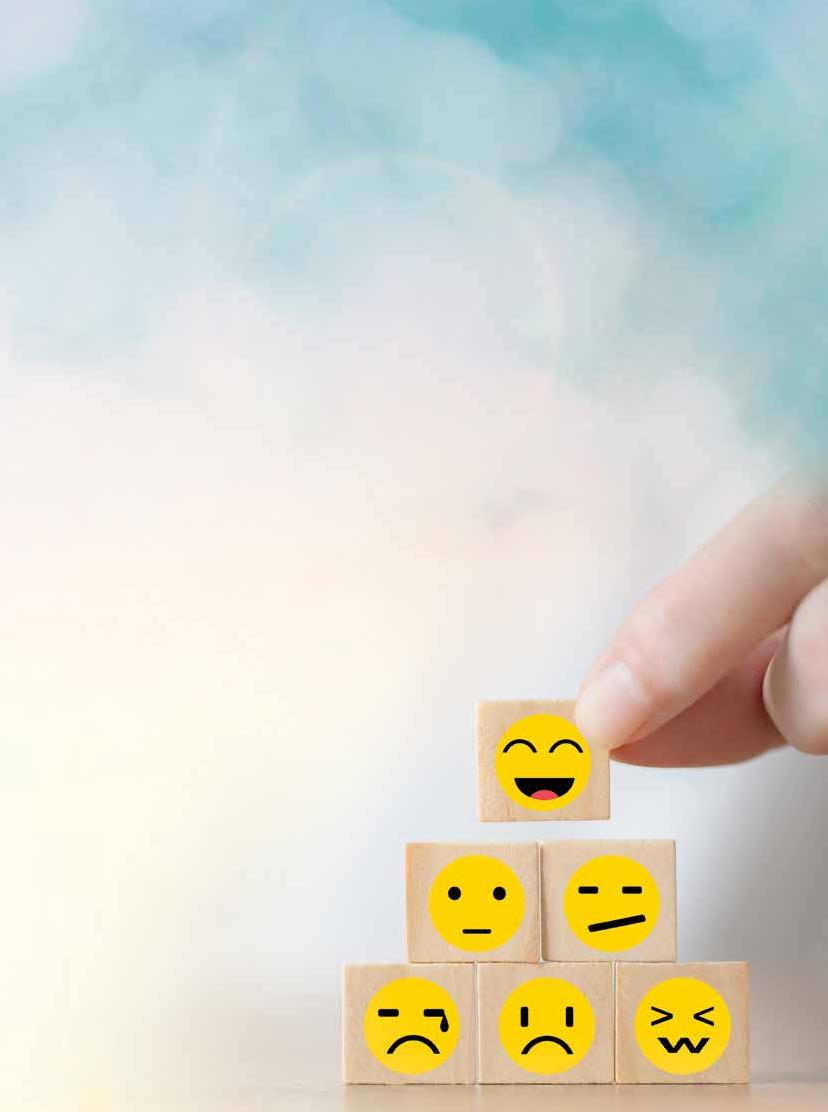
Everything clears up, we are at peace. Just resolve to practise like that. You should take what I've said and
contemplate it. If anything is not right, please excuse me. But for you to know whether it's right or wrong depends on your practising and seeing for yourselves. Whatever's wrong, throw it out. If it's right, then take it and use it. Actually we practise in order to let go of both right and wrong. In the end, we just throw everything out. If it's right, throw it out; wrong, throw it out! Usually if it's right we cling to rightness, if it's wrong we hold it to be wrong, and then arguments follow. But the Dhamma is the place where there's nothing ̶ nothing at all.
"...The Buddha was enlightened in the world, he contemplated the world. If he hadn't contemplated the world, if he hadn't seen the world, he couldn't have risen above it. The Buddha's enlightenment was simply enlightenment of this very world. The world was still there: gain and loss, praise and criticism, fame and disrepute, happiness and unhappiness were all still there. If there weren't these things there would be nothing to become enlightened to..."
An excerpt from “A Taste of Freedom” © 1991. The Sangha, Wat Pah Nanachat
Venerable Ajahn Chah was an eminent and greatly respected meditation master, and the teacher of well-known monastics, including Venerables Ajahn Sumedho and Ajahn Brahm. In 1976, Venerable Ajahn Chah was invited to England together with Ajahn Sumedho, which led to the establishment of the first branch monastery of Wat Pa Pong outside of Thailand. Since then, further branch monasteries have been established in England, Switzerland, Australia, New Zealand and Italy.
Venerable Ajahn Chah's impeccable approach to meditation, or Dhamma practice, and his simple, direct style of teaching, with the emphasis on practical application and a balanced attitude, attracted a large following of monks and laypeople. The teachings of Ajahn Chah continue to guide and inspire countless practitioners even to this day.
13 no.55 | jan-apr 2023 |
profile
by Venerable Shi Jian Xin
"You're Right!?"
~ Conflict Resolution from a Buddhist
Ï
n early October 2022, I was invited to attend a conference organised by the International Institute of Mediators (IIM). This is a non-profit organisation set up to develop and enhance the mediation and related dispute resolution profession. I was one of the six religious speakers invited to do a presentation and participate in a panel discussion on the topic of “Resolving Disputes Involving Religious Beliefs and Racial Sensitivities”.
Singapore is a multi-racial and multi-religious society, and it is no surprise that many of the conflicts and disputes that happen locally revolve around our different religious beliefs and racial sensitivities. Thus, having a better understanding of dispute resolution from the perspectives of the major religions in Singapore will greatly assist the work of the mediators.

In my presentation, I shared a few anecdotes from our Buddhist context to illustrate
Perspective
the wisdom and compassion of the Buddhaʼs teachings in resolving disputes and conflicts. One anecdote is a story of two monks in a monastery arguing over a point regarding their Master's teaching. One said yes and the other said no. Finally, they went to the Master to clarify their understanding of the teaching. After the first monk explained why he said yes, the Master nodded his head and said, "You're right." The first monk was very happy and went away.
The other monk, of course, was not happy. He also explained to the Master why he said no. Thinking for a while, the Master also nodded his head and said, "You're right." The monk was then satisfied and went away.
A younger monk who was sitting beside the Master was very puzzled. He said, "Master, I do not understand. It is obvious that only one of them is correct. They cannot be both right. Why did you say that they are both correct?"
The Master replied, "Hmm, you're right!"
What is right? What is wrong? Is it always black and white? What about shades of grey? How many times have we gotten into conflicts with others just to prove that we were right? How many times have we been absolutely sure we were right ̶ only to find out later that we were in fact totally wrong?
Another anecdote is a favourite story of Ajahn Chah, a highly-revered Venerable of the Thai Forest tradition: A newly married couple went for a walk together in the woods one fine evening after dinner. They were having such a great time being together until they heard a sound in the distance.
“Quack! Quack!”
“Listen,” said the wife. “That must be a chicken.”
“No, no. That was a duck,” said the husband.
“No, Iʼm sure that was a chicken,” she said.
“Impossible. Chickens go ʻCocka-doodle-doo,ʼ ducks go ʻQuack!
no.55 | jan-apr 2023 14 |
Quack!ʼ Thatʼs a duck, darling,” he said, with the first signs of irritation.
“Quack! Quack!” it went again. “See! Itʼs a duck,” he said.
“No, dear. Thatʼs a chicken. Iʼm positive,” she asserted, digging in her heels.
“Listen wife! That̶is̶a̶duck. D-u-c-k, duck! Got it?” he said angrily. “But itʼs a chicken...”, she said softly and was almost in tears.
The husband saw the tears welling up in his wifeʼs eyes and, at last, remembered why he had married her. His face softened and he said gently, “Sorry, darling. I think you must be right. That is a chicken.”
“Thank you, dear,” she said as she squeezed his hand.
“Quack! Quack!” came the sound through the woods, as they continued their walk together in loving company.
How many of our conflicts are such “chicken and duck” arguments? Do we remember our priorities? What are our more important common goals? Can we choose to focus on our similarities, rather than to generate conflicts due to our differences? Is it
sometimes better to be kind than to be right?
During the conference, there was a skit about a mediation session titled “Resolving Racial and Religious Conflicts”. It was an enactment of an actual religious dispute and the discussion of the challenges involved. In the skit, two mediators were trying to resolve a dispute between two neighbours of different faiths ̶ a Buddhist and a Christian. The Christian was infuriated by the Buddhist burning “1-kilometre” joss sticks (an exaggeration, of course) outside her flat that aggravated his mother's asthma. The Buddhist was also enraged by the Christian for using his fire extinguisher to extinguish her burning joss sticks. In the end, the mediators succeeded in mediating the conflict ̶ the Buddhist agreed to burn shorter joss sticks lasting only 15 minutes each, while the Christian agreed not to extinguish her burning joss sticks. Furthermore, they ended the mediation process by shaking hands with each other, expressing goodwill.
From a practising Buddhist point of view, could this be seen as a “chicken and duck” situation? Isnʼt having a harmonious and respectful relationship with a neighbour of
another faith more important than burning long, thick sticks of incense?
Isn't it more important to be kind than to be right here?
As practising Buddhists, it is important that we incorporate mindfulness into our daily living and in our interactions with others, so that we can minimise conflicts in our lives. However, if conflicts do arise, we can apply the compassion and wisdom of the Buddhaʼs teachings to resolve them. The two qualities of wisdom and compassion - seeing things as they really are and mindfully embracing our experience with compassion - are as interdependent as the two wings of a great bird. Together, they enable us to fly and be free.
Venerable Jian Xin graduated from the National University of Singapore and completed postgraduate studies at Yuan Kuang Buddhist Institute in Taiwan. She also holds a Master's degree in Buddhist Studies from the University of London, England. Since encountering the Dharma at the age of 15, Venerable Jian Xin made the aspiration to take the Bodhisattva path, benefitting self and others.
She worked as a professional Counsellor and Therapist before her ordination, assisting many individuals to gain insights, clarity and direction in their lives.

15 no.55 | jan-apr 2023 |
did y ou know ?
and supervision of 84000: Translating the Words of the Buddha
Translated by the Kirtimukha Translation Group under the patronage

Teacing M anjusri’s
Thissutraaddressesthefourpurposes oneshouldkeepinmindwhenmaking offeringstotheBuddha.
The bodhisattva Mañju rī approaches the Buddha, who is teaching the Dharma in rāvastī, and offers him the shade of a jeweled parasol. The god Susīma, who is in the audience, asks Mañju rī whether he is satisfied with his offering, to which Mañju rī replies that those who seek enlightenment should never be content with making offerings to the Buddha. Susīma then asks what purpose one should keep in mind when making offerings to the Buddha. In response, Mañju rī lists a set of four purposes.
Homage to all buddhas and bodhisattvas!
Thus did I hear at one time. The Blessed One was dwelling in Anāthapiṇḍadaʼs Park, the Jeta Grove in rāvastī, together with a great congregation of 1,250 monks and five thousand bodhisattvas.
At that time, the Blessed One was teaching the Dharma surrounded and venerated by an audience of many hundreds of thousands. Youthful Mañju rī then hoisted a jewelled parasol measuring ten yojanas in circumference and held it directly over the Blessed Oneʼs head.
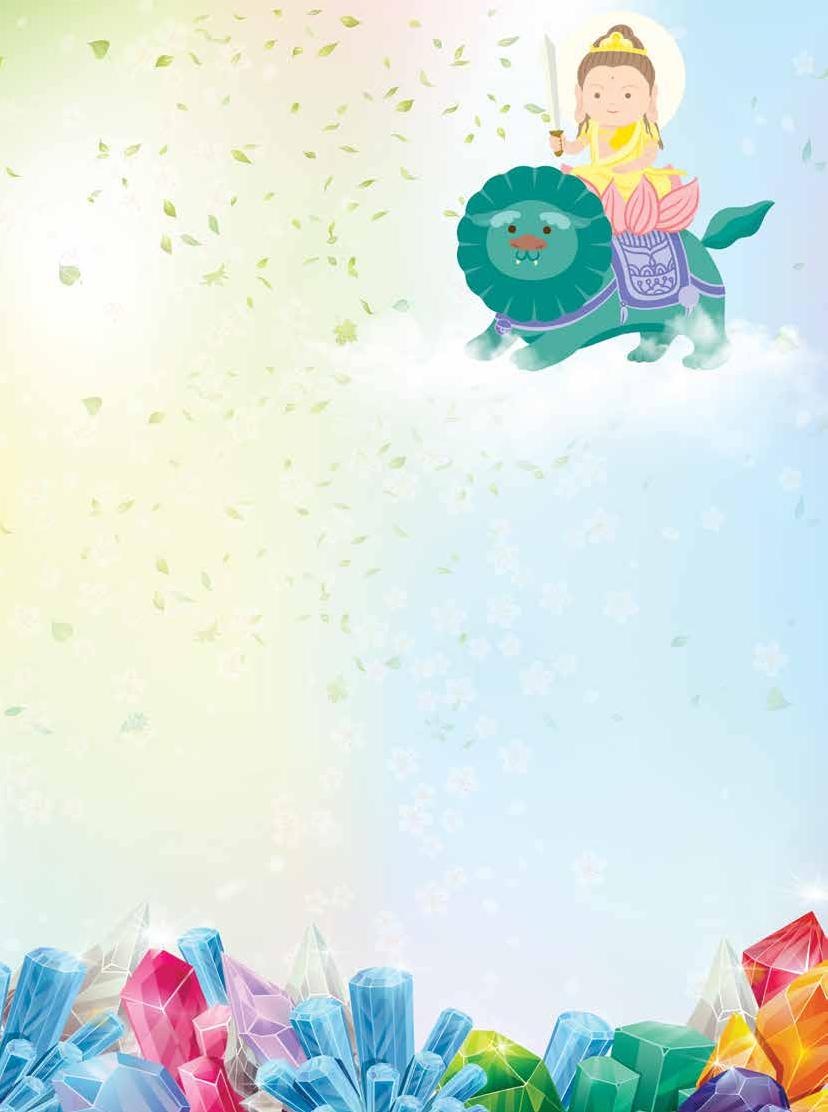
Present in the retinue, along with his entourage, was a god from the house of Santuṣita called Susīma, whose progress towards unsurpassed and perfect awakening had become irreversible. He now rose from his seat, approached the place where Youthful Mañju rī was, and addressed him: “Mañju rī , arenʼt you satisfied with your offering to the Blessed One?”
Mañju rī asked in return, “Divine being, tell me, is the great ocean ever satisfied by having water poured into it?”
“Mañju rī, no, it is not,” replied the god.
Mañju rī said, “Divine being, likewise, the wisdom of omniscience is as profound, immeasurable, and boundless as the great ocean. Those bodhisattva mahāsattvas who wish to search for that wisdom should never be content in their desire to make offerings to the Tathāgata.”
The god then asked, “Mañju rī, with what purpose in mind should offerings be made to the Tathāgata?”
Mañju rīreplied,“Divinebeing,offeringsshouldbe madetotheTathāgatawithfourpurposesinmind. Whatarethosefour?Theyare: (1)thepurposeofthemindofawakening, (2)thepurposeofliberatingallsentientbeings, (3)thepurposethatthelineageoftheThreeJewels willcontinueuninterrupted,and (4)thepurposeofpurifyingallbuddharealms.
Divine being, it is with these four purposes in mind that offerings should be made to the Tathāgata.”
When Mañju rī had spoken, the god Susīma, the monks, nuns, bodhisattvas, and the entire retinue, along with the world with its gods, humans, asuras, and gandharvas, rejoiced and praised the words of Youthful Mañju rī .
This concludes the noble Great Vehicle sūtra, “Mañju rī's Teaching.”
84000: Translating the Words of the Buddha is a global non-profit initiative to translate all the Buddhaʼs words into modern languages, and to make them available to everyone.
no.55 | jan-apr 2023 16 |
Håñdlïñg Çøñflïçt
åñd Çøñfrøñtåtïøñ
Whether conflict occurs at work, school or at home, relationships can be messy and the resulting conflict stressful. Our words at such times have an effect and if we use them recklessly, we live with the consequences. This is the law of karma. Actions including utterances have consequences. The Buddha likened speech to an axe, a tool of precision and power, a weapon capable of great damage.
In times of conflict, thinking before you speak is often the only way to ensure what the Buddha called Skilful Speech (a component of his Noble Eightfold Path out of suffering). Skilful Speech has four qualities: it is truthful, kind, gentle and helpful.
Instead of power, finger-pointing and demands, to make Right Speech central in our lives, we practise non-violent communication that emphasises the quality of empathy, needs and feelings. For instance, instead of ʻYouʼre a complete slob, now clean up your room!ʼ say ʻI feel stressed when I look at your bedroom because I have a need for order.ʼ
The ability to apologise is often the ultimate way to take responsibility and clear the air.
While some of us avoid confrontation at all costs, others swear by it as a way to solve problems. Yet, as we all know,

confrontation is dangerous when our heads are hot. One invaluable way to avoid conflict that so often follows confrontation is by writing letters.

In my experience, through editing, I have been able to present a message framed with the Buddhist ideal of Skilful Speech. My dear husband, Marek has received several of these epistles over the years and I have always been impressed with how effective they are in initiating a constructive discussion. A letter enables me to present my whole case without being interrupted or risk of either party digressing. It also gives me time to think of exactly the right words to express myself clearly and sensitively. Marek has time to pause and consider my case, and his response.
Other parents have recommended letters, emails and texts as a way to keep communication open with a secretive teen who does not want parents ʻin their faceʼ.
A parent might text, for example, ʻI am here to help if you feel like talking.ʼ
Adapted from the book, Buddhism for Parents on the Go
17 no.55 | jan-apr 2023 |
Text: Sarah Napthali, author of Buddhism for Mothers
mindfulness parenting
Seeing Through The Perspectives of Others
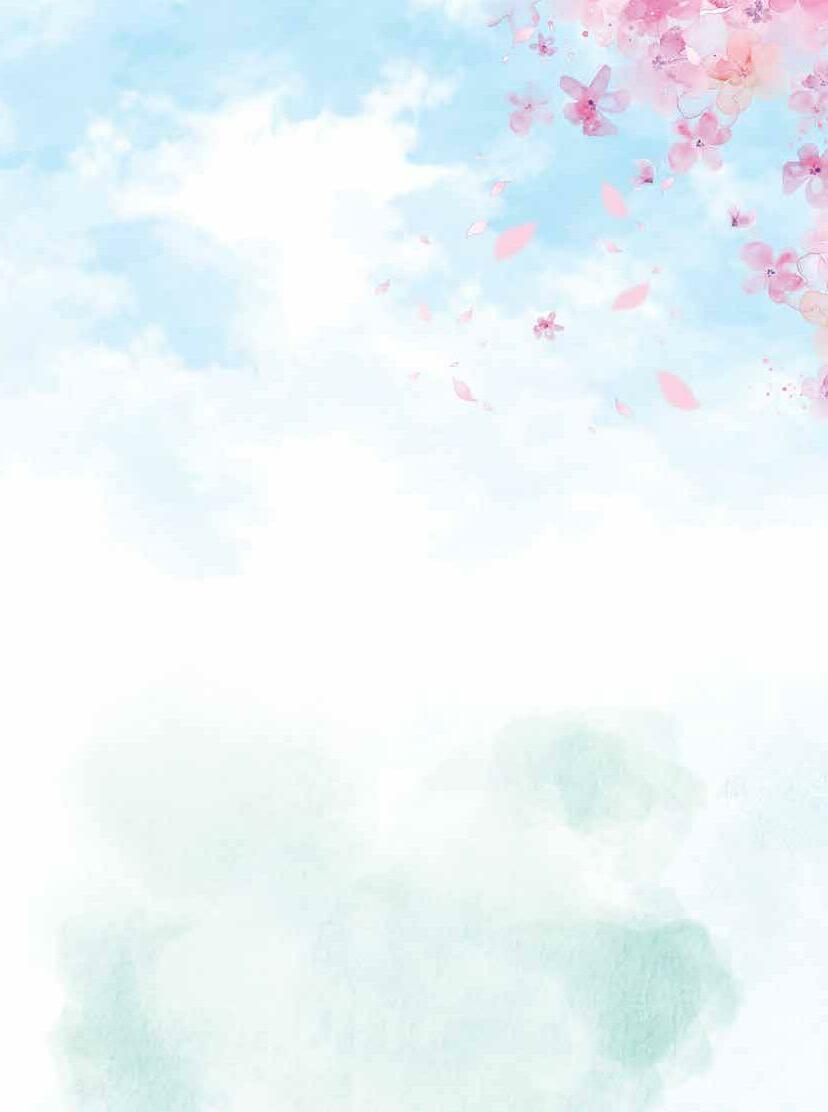
compassion and wisdom, examine issues from di erent perspectives. Only then will the outcomes be holistic and mutually agreeable.

SHARING

With
buddhist t ales Illustration & original text in Chinese:
Translator:
Why don't both of you exchange standpoints? 什么你 不 个角度看呢? 我 是 It's a 6 我 是 It's a 9
Robert Yeo
Oh Puay Fong
Conflicts and disagreements often arise because people approach the same issue from their own narrow viewpoint. They tend to see things only from their perspective and are unwilling to examine the issues with compassion and wisdom by considering alternative viewpoints.
no.54 | sep-dec 2022 | jan-apr 2023 18 |
Amituofo!
TheJealous Mentor

Åmentor was with his assistant at an event where there were three cakes for all the guests. The mentor took all the cakes and told his assistant to hide them, which the latter did.

After they left the event, the assistant failed to hand over the cakes when they were alone. Usually, the assistant walked behind his mentor. This time, however, the mentor reprimanded his assistant sharply, “Why are you walking behind me? I am not your prisoner.”
Confused, the assistant walked alongside his mentor. “Why are you walking next to me? I am not your friend,” came another caustic response.
The assistant then moved and walked ahead instead.
“You are not my superior!” snapped his mentor. In despair, the young man said, “I am confused. What should I do?”
“Just give me the cakes, and you can do whatever you like!”
19 no.55 | jan-apr 2023 |
Retold by: Esther Thien
buddhist t ales
buddhist t ales
Illustrations & text: @siha_the_wise
Facing Death
Boohoo, my mother is dying soon. Why is this happening? What should I do?

It is diffcult to be told that we or our loved one is terminally ill and dying soon. Yet, we have to remember that death is as natural as birth. Life itself is a terminal disease.
1. Denial 2. Anger 3. Depression 4. Bargaining 5. Acceptance
Given the Five Stages of Grief we must understand the importance of showing emotional support and care for anyone facing death or loss. With acceptance, comes meaning, especially on how we should spend our time and lead our life.
This is not happening! Death comes too soon!
Preparation
Seeing our loved one dying is diffcult. Thus always try to remain calm. Maintain a peaceful and calm ambience at home for them. Prepare a will. Be prepared for the costs of funeral and burial or cremation.
Give love
Give our dying loved ones lots of love. Show love through words, care and touch.
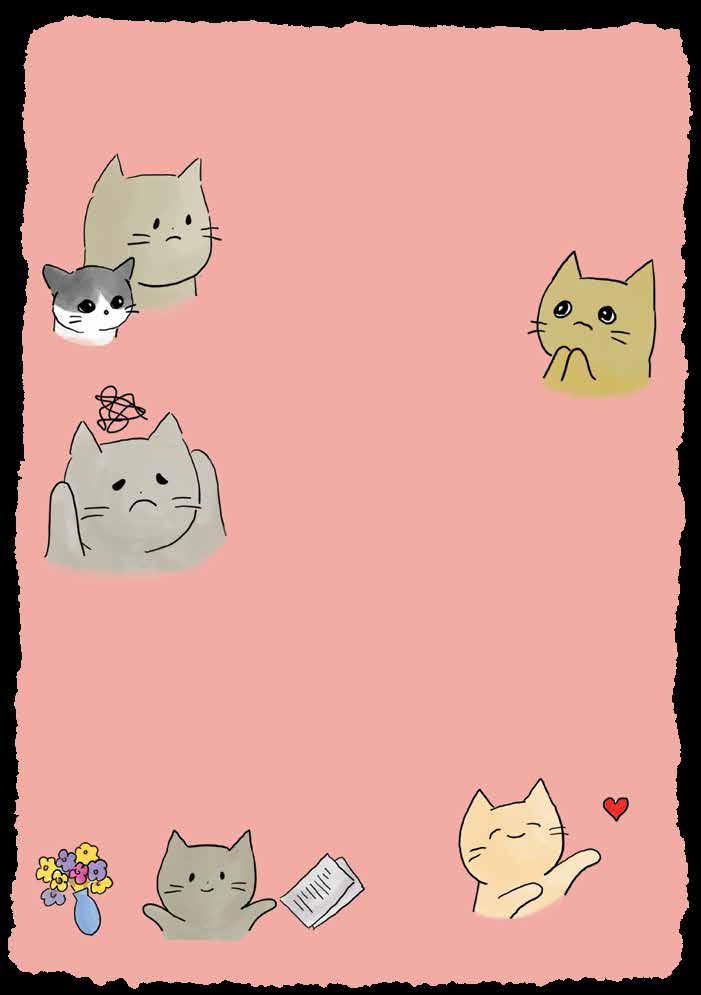
no.55 | jan-apr 2023 20 |
Good deeds
Mention the good wonderful wholesome things your dying loved ones had done before like acts of generosity, having taken refuge etc when talking to them. Provide spiritual comfort, seek and give forgiveness.
Do you remember that time?
Moment of death
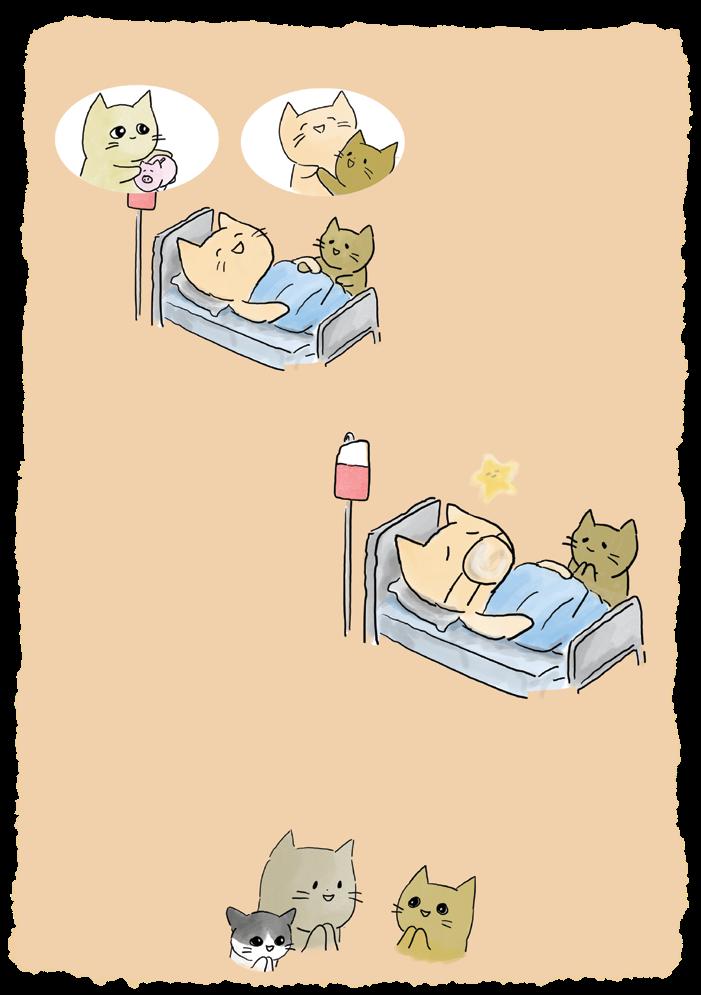

At the moment of death, the mind may be at its clearest. The sense of hearing is the last to fade away. They may still be able to hear us, thus words of kindness, gratitude, assurance and forgiveness are important. Assure them all will be well and grant them the permission to leave this world without worries and care. Release them from worldly concerns.
Thank you so much. I love you. Don’t worry about us. We will be well. Leave in peace and be free.
Now let us share our merits with anyone who is suffering and in pain! May all beings be well and happy!
“A man who is long absent comes home safe and sound from afar. His family, friends and companions joyously welcome his return. In just the same way, when you have done good and gone from this world to the realm beyond, your good deeds receive you as a dear one who has returned home.”
21 no.55 | jan-apr 2023 |
ponder
Text loosely translated by: Oh Puay Fong
Ï
started learning Chinese painting recently. The class ambience was very relaxing and cordial. Some of my fellow classmates collect gold jewellery, crystals and gemstones. Others go for branded bags, stamps, coins, plush toys, models of cartoon characters, seashells, bookmarks, or stickers, etc. I love collecting things, too. Every time I travel overseas, a few suitcases are not enough to hold my shopping haul. Some are stored in cabinets, others under the bed. While some are left in a corner at home, unopened and untouched.
The passing of time offers no guarantee that we will acquire wisdom, but things will inevitably accumulate a thick cover of dust after a long time. There were even occasions when I had chance encounters with some previously beloved items, only to realise that they have been long forgotten. When did I buy these? From where? Why did I buy them? Even worse, they have turned from cherished treasures into liabilities. As they accumulate and take up space, even walking from the kitchen to the bedroom becomes an obstacle course. I even tripped over and fell down a few times at home. Sometimes, I wanted to find a certain item that I was sure I had bought, but I could not locate it. Over time, this hobby of collecting things becomes a troublesome nuisance.
Likewise, polluted states and defilements building up daily in our mind is also an issue that we

must examine. If we do not declutter all the nooks and corners of our mind, the potential damage that these mental contaminants can wreak is grave. It harms not only the individual, but also oneʼs family, society and country.
During the pandemic when people were forced to work or study from home, the rate of domestic violence increased, even the incidence of murders rose. Clearly, there are many reasons for this phenomenon, but one root cause is high stress level because peopleʼs minds are overloaded with too much toxins.
Some people aspire to own landed houses and luxurious cars, tasting the most delectable cuisines and buying only branded goods. In the process, they exhaust themselves physically and mentally with heavy financial commitments. Perhaps life will be easier and more carefree when we reduce our desires? Do we really need so many things?
In TheEnlightenmentSutra* (佛说八 大人觉经), the second realisation of enlightened beings states:
The third realisation of enlightened beings states:
(*Source: http://read.goodweb.net.cn/news/ news_view.asp?newsid=14870)

no.55 | jan-apr 2023 22 |
When we die, only our karma comes with us but not any of our belongings in this world. Why should we cling on to our attachments and entanglements?
People often say, “Let it go”. However, this is easier said than done. Most people can dish out this advice offhandedly but it is an impossible feat for the party concerned. Only when they are personally confronted by a predicament will they understand that letting go takes tremendous willpower and effort. It is not easily accomplished. Thus, “set yourself free” may be more appropriate. Release yourself from all unnecessary things, inconsequential acquaintances, excessive emotions, leftover baggage. We are not superheroes who can do it all and have it all. Rather, all phenomena arise when conditions are ripe so set yourself free! Lessen the burden on ourselves, reduce the garbage we generate, decrease the impact we leave on this planet. Instead, focus on our daily Buddhist practice, praying for world peace and the radiance of the Buddhaʼs light to permeate all space and time.
Set Yourself Free
Original Chinese article, 《放过自己》 written by Xiaoxue was published in issue 54


23 no.55 | jan-apr 2023 |
ponder Spread Not
Text loosely translated by: Oh Puay Fong

Positivity , Negativity
This is a strange world, and itʼs getting weirder and weirder. Observing the big and small news reported every day, the ones that attract the most attention are mostly negative incidents. Violence erupting in certain places, or specific groups being bullied by opposing groups in other places. Crimes soaring here, corruption rampant there. All these misdeeds inevitably captivate peopleʼs eyeballs and generate heated debates, dominating the dayʼs headlines. Yet, sensationalising them only provides the perpetrators with a falsely legitimate platform to publicise their cause. Moreover, commentators may not necessarily assess the situation with objectivity or wisdom, only adding their confused voices to aggravate the pandemonium. In contrast, good deeds are overlooked. In the unrelenting hustle of modern society, good deeds passed unnoticed like a cool breeze. They may even be completely ignored. Some people are oblivious to the good deeds happening around them, while others may even take these for granted. Coping with the pandemic these few years has been challenging indeed. Our physical and mental health, as well as economic wellbeing, were tested to the limits, but does this mean that human goodness is wiped out as a result? Perhaps not!
My younger sister works in a special education school. Recently, there were occasions when donors walked in to make their contributions. Some said that they were donating in the name of their brother, who is the father of a child with special needs, while they remained anonymous. Walking past some hawker stalls, I also saw notices that they offer free meals to
the needy. One hawker said that someone had approached him to sponsor 20 free meals daily. This led to a virtuous cycle motivating others to step forward to offer their help, too. A certain school arranged for the graduating class to use its classrooms at night for revision. This meant that the teachers, janitors and security guards had to stay back as well. Some parents proactively emailed the principal, offering to provide free dinners to encourage the students and thank the staff. Their thoughtfulness warmed the hearts of many.
There is an obscure temple in the Chinatown of Bangkok, where few tourists venture into. However, there are still those few odd ones who visit, even sponsoring coffins for the poor. In the neighbouring Chinese hospital, locals and tourists generously donate to help the poor and sick. Many such good deeds are not publicised, but they exist as invisible ripples of goodness touching others. I once read:
no.55 | jan-apr 2023 24 |
《扬善勿扬恶》
issue 54
Original Chinese article,
written by Xinxin was published in
good practice in daily life is to train ourselves to be aware of virtue shown by the people around us and to learn how to genuinely appreciate those qualities.

One skilful means that we might use is to repeat a short phrase internally when we see something inspiring: “Thatʼs good. Thatʼs really good! Thatʼs so good!”
Virtues that we can observe and celebrate include acts of generosity, kindness, compassion, honesty, hard work, patience, humility, calmness, intelligence employed for the common good.
The greater the importance we give to this practice the more sensitive we will become to human virtue, and the more joyful.
With wisdom, we can see people as vessels of virtue rather than their owners, and by doing so jealousy and anger fade away.
Opening our eyes to the ordinary everyday goodness all around us can transform our world.
Ajahn Jayasaro is a Theravada bhikkhu in the Thai Forest tradition. He received full ordination from Ajahn Chah in 1980, and was abbot of Wat Pah Nanachat from 1997 to 2002. In 2019, Ajahn Jayasaro was honoured with a royal title from Thailandʼs King Vajiralongkorn (Rama X).
Virtues Around You Be Awae of the

25 no.55 | jan-apr 2023 |
Text: Ajahn Jayasaro
ponder
Å
Fod

The past two years have presented opportunities for people to rethink their life purpose. Some took the leap of faith and embarked on their long-time passion. SoFood, a local vegetarian eatery was established in April 2020, in the heat of the pandemic. Despite the difficult times and its not-too-accessible and nonairconditioned location, SoFood has emerged as a popular eatery receiving good reviews.
SoFoodʼs menu comprises Asian Fusion (mainly of Japanese origin) such as maki, local delights, zichar (Chinese stir-fry dishes), sides and beverages. Unfortunately, the maki rolls are available only on an ad-hoc basis. These are the few dishes which I recommend:


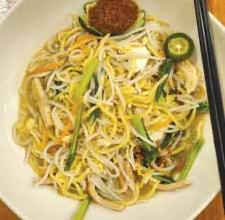

1. Hotplate Handmade “Unagi” with Rice ($9.90) ) ‒ The “unagi” slices are well-caramelised and have a unique tender texture. Served in a sizzling hotplate, the egg and sauce are bubbly hot when served and it
is best to savour the dish before the bubbling stops. Another good thing about this dish is the ingredient used in place of unagi. Instead of mock meat, this is made from tofu.

2. Spicy Mayo Cheese Maki ($11.80) ‒ With eight generous portions, this is a good sharing dish for cheese lovers. Although this is labelled as ʻspicy mayoʼ, the spiciness is really quite minimal. The presentation and taste is as good as what you can expect to get from sushi restaurants.
3. Hokkien Mee ($5.90) is one zichar dish that caught my attention in terms of the taste, despite not using any seafood. I guess it is because the sambal chilli complemented the thick and yellow noodles well. Apart from the main dishes, I particularly like two light bites ‒ yam roll ($4.90 for five pieces) and curry samosa ($3.90 for five pieces). They are reasonably priced for their yumminess. The humble eatery has limited seats, hence it would be best to avoid peak hours.
Hotplate Handmade “Unagi” with Rice Hokkien Mee
sa v ou r
no.55 | jan-apr 2023 26 |
Spicy Mayo Cheese Maki
Overall Ratings: Food 8.5/10 Ambience 7/10 Service 8/10 Address and Contact Details: So Food Address: 157A Serangoon North Ave 1
Singapore 551157 Website: www.sofood.sg Nearest MRT Station: Ang
Kio Operating Hours: Opens daily from 11am to 8.30pm (last order at 8pm). Restaurant accepts walk-in only.
#01-01
Mo
for the Soul –
Text & Photos: Jos Tan
A
While Upper Thomson is well known for the plethora of cafes and prata joints, little attention is paid to its neighbouring Thomson Plaza. Here, the newly opened iVegan ̶ a phonetic translation of its Chinese name “ 爱素” , meaning “love vegan” ̶ serves natural, healthy, plant-based fusion cuisine, with the promise of no MSG or refined sugar used.


You will be surprised by its menu of Japanese, Chinese and Western inspired dishes, using ingredients creatively to produce not only eye-pleasing but also tasty dishes.


I started with a few recommended dishes: Spicy Mushroom, Portobello Arugula Salad and Scallop. The “scallop” is actually king oyster mushroom, and is almost indistinguishable in taste from the real thing.

No Japanese food lover would give good old sushi a miss. The beautifully displayed Mexican avocado spread on top of the sushi rice with crispy tortilla chips is both refreshing and flavourful.

If you are in the mood for Chinese north-eastern cuisine like the famous Mala Xiang Guo or Spicy Mapo Tofu, you can find it here too!
All the food here is affordably priced, and it is a wonderful place to fill your stomach with friends and family after a workout or hike at the nearby MacRitchie Reservoir on weekends.
Guacamole Maki
Portobello Arugula Salad
27 no.55 | jan-apr 2023 |
Scallop
Overall Ratings: Food 7/10 Ambience 6/10 Service 8/10 Address and Contact Details: 301 Upper
Thomson
#01-109, Singapore 574408 Operating Hours: Opens daily from 12pm to 9pm
Thomson Road,
Plaza,
–
&
Taste of Natural, HeathyCuisineFusio
Text
Photos: Chloe Huang
savour
A: Anger may give us a tremendous sense of power, but at the same time it undermines the happiness of ourselves and others. It has the power to burn down forests of positive potential. We generally consider something beneficial if it promotes happiness. But when we ask ourselves, “Am I happy when Iʼm angry?” the answer is undoubtedly no. We may feel a surge of physical energy due to physiological reasons, but emotionally, we feel miserable. Thus, from our own experience, we can see that anger does not promote happiness.
We donʼt communicate well when weʼre angry. We may speak loudly as if the other person were hard of hearing or repeat what we say as if he had a bad memory, but this is not communication. Good communication involves expressing ourselves in a way that the other person understands. It is not simply dumping our feelings on the other. If we scream, others tune us out in the same way that we block out the meaning of words when someone yells at us. Good communication also involves expressing our feelings and thoughts with words, gestures and examples that make sense to the other person and help her to understand what we are trying to say. Under the sway of anger, however, we neither think as clearly as usual nor express ourselves pleasantly.
Also, under the influence of anger, we say and do things that we later regret. Years of trust built with great effort can be quickly damaged by a few moments of uncontrolled anger. In a bout of

no.54 | sep-dec 2022 | jan-apr 2023
Disadvantages of

Anger
anger, we treat the people we love the most in a way that we would never treat a stranger. When weʼre angry we say horribly cruel things and may even physically strike those dearest to us. This harms not only our loved ones, but also ourselves, as we sit aghast while the family we cherish disintegrates. This, in turn, breeds guilt and self-hatred, emotions that immobilise us and further harm our relationships and ourselves. If we could tame our anger, such painful consequences could be avoided.
Furthermore, anger can result in people avoiding us. Here, thinking back to a situation in which we were angry can be helpful. When we step out of our shoes and look at ourselves from the other personʼs viewpoint, our words and actions appear differently. We will understand why the other was hurt by what we said. While we need not feel guilty about these incidents, we do need to recognize the harmful effects of our uncontrolled hostility and, for the sake of ourselves and others, apply antidotes to calm it.
In addition, maintaining anger over a long period fosters resentment and bitterness within us. Sometimes we meet old people who have stockpiled their grudges over many years,
Ven Thubten Chodron www.thubtenchodron.org www.sravasti.org
carrying hatred and disappointment with them wherever they go. None of us wants to grow old like that, but by not counteracting our anger, we allow it happen.
Some people interpret Buddhist teachings on the disadvantages of anger to mean that weʼre not supposed to become angry or are bad and sinful if we do. The Buddha never said this. No judgment is involved. Beating up ourselves emotionally is not beneficial. The fact that we got angry doesnʼt mean weʼre bad people. It just means that a harmful emotion temporarily overwhelmed us. Anger, cruel words, and violent actions are not our identity. They are clouds on the pure nature of our mind, and they can be removed or prevented. Although we are not yet well trained in patience, we can gradually develop this quality when we try.
When weʼre angry, the anger is just what is at that moment. Telling ourselves we should not be angry doesnʼt work, for anger is already present. Nevertheless, we should neither ignore the anger nor indulge in it. The real questions to ask ourselves are, “Do I want to cultivate my anger or subdue it? Does anger promote happiness or not?
28 |
Q & A
Q: Doesn’t anger make us more powerful? Why isn’t anger
benefcial? – A.
Perhaps you too have a story to tell, a story of how the Buddha and His Teachings so inspired you to walk the Buddhist path, or maybe a simple account of the little treasures and blessings in life? Or perhaps you are a budding poet who would like to share a prose and a verse or two about how the Dharma changed your life forever?
Are you touched by the stories and interviews featured in this magazine? Whatever your story or poem may be, we welcome you to write in to us. Share your inspiring tale of faith and awakening with the rest of the world.



KONG MENG SAN PHOR KARK SEE MONASTERY AWAKEN Magazine 88 Bright Hill Road Singapore 574117
will
only. BUSINESS REPLY SERVICE PERMIT NO. 08598 kmspks.or g THANK YOU 您的微笑,您的宽厚 您为众人慈悲的奉献 Truly appreciate your smile, your g enerosity, your kind service to all
Postage
be paid by addressee. For posting in Singapore
Send
AWAKEN PUBLISHING Kong Meng San Phor Kark See Monastery 88 Bright Hill Road Singapore 574117 Please include your full name address and contact details We reserve the right to edit your stories according to our discretion. Published three times a year by Kong Meng San Phor Kark See Monastery, AWAKEN is a FREE bilingual Buddhist magazine that aims to help readers gain insights into their life’s journey using the Dharma. to Compassion & Wisdom on the journey of life… GET YOUR FREE COPY FROM THESE OUTLETS: SINGAPORE BUDDHIST FEDERATION 59 Lorong 24A Geylang S(398583) TAI PEI BUDDHIST CENTRE 2 Lavender Street S(338823) CI YAN VEGETARIAN HEALTH FOOD 8/10 Smith Street S(058917) AWARENESS PLACE Blk 231 Bain Street #01-63 Bras Brasah Complex S(180231) AWARENESS HUB Blk 231 Bain Street #03-39 Bras Brasah Complex S(180231) KUSHINAGARA BUDDHIST CULTURAL PTE LTD 190 Middle Rd S(188979) CLASSIC LAO DI FANG RESTAURANT 9 Penang Rd # B1-12 Park Mall S(238459) whilststockslast OUT NOW!
your entries to publication@kmspks.org or:
that more can be touched by the beauty of the Dharma, and be inspired to lead happy and meaningful lives? If so, you can share in the producton costs of AWAKEN Magazine for free distributon. Simply photocopy this page, fll in the sponsorship form and mail it back to us together with your cheque or money order. All cheques and money orders should be made payable to KMSPKS Monastery and sent to:

Kong Meng San Phor Kark See Monastery AWAKEN Magazine 88 Bright Hill Road Singapore 574117

For overseas readers, please send bankdrafs in Singapore currency. Please include S$10 for bank charges. Please note that the monastery is NOT able to accept cheques in foreign currency. You can also donate online via eNets or Giro at htps://www.kmspks.org/make-a-donaton/




If you have any enquiries, please call 6849 5342 or e-mail: publicaton@kmspks.org
Name: Chinese Name: Gender: Age: Highest educatonal level: Address: Occupaton: Tel: (H) (O) (Hp) Email: Amount: (Cash*/ Cheque No: )

Do you require an ofcial receipt? (Yes* / No) *Please delete where appropriate Would you like to receive emails on upcoming talks, retreats or other events of the monastery? (Yes* / No) *Please delete where appropriate Where did you obtain this magazine?
* By submitting this donation form, you agree that KMSPKS may collect, use and disclose your personal data for the purposes of processing donations and performing donor relations activities & communication in accordance with the Personal Data Protection Act 2012 and the monastery’s privacy policy available at www.kmspks.org/privacy.
Mode of Instruction On-site Class Admin Fee $50 per course year Registration Log in and register via
Enquiry 6849 5329 | dharmaschool@kmspks.org
School Students
Mentor
R E G I STER NOW Student Admission Exercise 2023 KMS Dharma Scho l We value your comments and welcome your suggestions. 我们十分重视每位读者的反馈与意见。 Let us know how Awaken magazine is working out for you. Your responses will help us understand what you like and contribute to our continued e ort to spread the teachings of the Dharma and bring benefit to all sentient beings. May everyone cultivate love, kindness, wisdom, and compassion in our lives. 您的宝贵意见,将有助于我们更加了解普觉杂志进步的 方向。在您的帮助下,我们定能更好的宣扬佛法,愿你我 一起播下善种,待善根发芽茁壮,为众生种福德田。 Please scan QR code to take our survey. 欢迎扫描QR码访问 我们的问卷调查。 YOUR FEEDBACK MATTERS 关于您的宝贵意见 Dear Reader, “ The Gift of the Dharma Excels All Other Gifts. ” Issue 55 / January 2023 Do you wish to ofer this greatest gif to
dharmaschool.kmspks.org
Good moral values such as gratitude, compassion, forbearance and wisdom are the foundation of the Buddha Dharma. Instilling positive values during a child’s formative years nurture and help in their social and emotional development. Calling all parents and students! Registration for KMS 2023 Dharma School is now open for the following cohorts: Primary
(Primary 1 to 6) Secondary School Students (Secondary 1 to 4)
Programme (Youths aged 17 to 22 years old) 2023 School Term Semester 1 - Mid February to End May 2023 Semester 2 - July to End September 2023
others, so
Please glue here and do not staple Please
here and do not staple
Please glue here and do not staple Scan and donate to our Monastery’s publishing fund 请扫描 以助印本寺 出版的刊物 with
glue
Please glue here and do not staple
Mulberryleavesarehighlynutritious,loadedwithpowerful compoundslikepolyphenols,antioxidantsandvitamin C,aswellaszinc,calcium,iron,potassium,phosphorus andmagnesium.Mulberryleavesmayalsohelptolower bloodsugar,cholesterolandinfammationlevels.Theyare usefulforpromotingheartandliverhealth,andcontain anti-cancerproperties.
1. Mulberry Leaf Crisps

Ingredients (Serves one to two): 20pcs Mulberry leaves 1 tsp Rock Salt 1.5 tsp Chilli powder Method: 1. Clean mulberry leaves thoroughly 2. Pat dry and bake in oven at 120°C for 30 minutes. 3. Sprinkle chilli powder and salt. Serve while hot.
“Mulberryleafcrispsisagourmetthathasmedicinal value.Mulberryleavesareknowntolowerhighblood pressureandtoimprovebloodpurity.”‒KeeYew

2. Vegan Rojak

Ingredients (Serves three): 5 tbsp Blackstrap molasses 1 tbsp Ume plum sauce 1 tbsp Brown sugar 1.5 tsp Rock salt 1 tbsp Apple cider vinegar 1 plate Mixed fruits 1-2 tbsp Coarsely ground cashews
Method: 1. Mix all ingredients except the cashews well. 2. Sprinkle cashews on top and serve fresh.
“Arojakrichinfibreandenzymesforthegut, offeringtasteandnourishment.”‒KeeYew
Recipes and photos courtesy of Wong Kee Yew, a vegetarian nutrition teacher who conducts classes at Awareness Hub. Please call Awareness Hub at 6336 5067, or turn to page 35 & 36 for more details.
recipe






Scan this to find out more about Kee
Yew
31 no.55 | jan-apr 2023 |
seenThe inticacies of life, learning its sacredness and letting it be
Çheryl is a young woman who has recently gone through a period of multiple hardships. Yet despite the pain, she manages to glimpse a way out when a friend, by spending time to really listen to her, gives her the necessary strength to accept that she is indeed simply messing up her life.
The movie is full of metaphors that pile up one on top of the other, Cherylʼs surname, ʻStrayedʼ being one example.
When Cheryl goes into the pharmacy to buy a pregnancy test and a shovel to dig her car out of the snow ‒ yet another metaphor for being ʻdeep in itʼ ‒ she spots a book about walking the ʻPacific Crest Trailʼ along Americaʼs west coast.
“I donʼt know when I became like this. I was strong, responsible, I wanted things in life, I was good, you know. I ruined my marriage, now Iʼm ruining the rest of my life. Iʼm going to walk myself back to the woman my mother thought I was.”
This is THE turning point, the moment in which she decides to start afresh, taking the plunge to hike 1000 miles along this famous route.

Her determination is evident when she writes, “If your nerves deny you, go above your nerves” in the registration book at the start of the trail. While battling the first few miles of this massive undertaking, the voice of her reassuring friend constantly echoes in her mind, “Remember you can quit any time”, which paradoxically gives her the strength to go on.
She has to muster enormous courage just to keep on going, but realising that she needs to get beyond each of her self-imposed barriers and limitations, she faces the desert and blazing heat, deep forest terrain and snow-covered mountains, as well as the obvious dangers that lurk along the way for a young woman on her own, including wild animals and strangers.

Her luggage is so heavy that she struggles to even pick it up at the beginning. This is another metaphor for the weight of life sheʼs carrying. At the first major pit stop on the route, she gets help in getting rid of the unnecessary stuff thatʼs in her bag, another metaphor for lightening her load a little.
Along the way, she has to trust others and itʼs during these moments that we get flashbacks of the life that she has left behind. These give context and help us to understand that this trail of pure nature is actually less ʻwildʼ than the life she was previously
living. Sheʼs taken this huge step of immersing herself in the natural order of things to regain balance.
A quote by James Michener towards the end of the movie, “We are never prepared for what we expect” sums up the magic and beauty of the intricacies of life. Indeed, Cheryl comes to understand that no matter how much hardship sheʼs previously had, she would not go back and do anything differently, as all those experiences were the building blocks she needed to get her to where she is today.
“After I lost myself in the wilderness of my grief, I found my own way out of the woods and I didnʼt even know where I was going until I got there… My life, like all lives, is mysterious, irrevocable and sacred, so very close, so very present, so very belonging to me. How wild it is to let it be.”
Buy or rent the film on YouTube to watch.
Directed by: Jean-Marc Vallee Starring: Reese Witherspoon, Laura Dern, Thomas Sadoski, Michiel Huisman, Gab y Hoffman, Ke vin Rankin
Text: Susan Griffith-Jones
no.55 | jan-apr 2023 32 |
In this age of divisiveness and extremism, especially with the pandemic, the Dalai Lama reveals how practising patience and compassion is more essential than ever before to navigate our times. Anger is one of the roots that cause so much unhappiness, suffering, discord and violence in our world, including the self-hating and loathing that pervades our culture.
If you are feeling stressed and anxious from the demands of daily life, and are unhappy and envious of those around you, step back, breathe and leaf through this book of simple advice from a Zen Buddhist monk who says that Zen is really all about "the knowledge needed for a person to live life with a positive outlook".
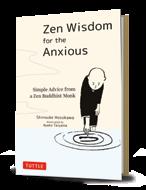

Perfecting Patience
- Buddhist Techniques to Overcome Anger
By The Dalai Lama S$31.90
All of the worldʼs major religions emphasise the importance of love, compassion and tolerance. This is especially true in the Buddhist traditions, which unanimously teach that compassion and love are the foundation of all paths of practice. To cultivate the potential for compassion and love we inherently have, it is crucial to counteract their opposing forces: anger and hatred.
In PerfectingPatience, the Dalai Lama demonstrates how, through the practice of patience and tolerance, we can overcome the obstacles of anger and hatred. He centres his discussion on AGuidetotheBodhisattvaWayofLife, the classic work on the activities of Bodhisattvas̶those who aspire to attain full enlightenment in order to benefit all beings.
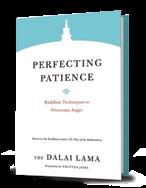
Anger is addictive, there is a physical and emotional high due to an increase in adrenalin. But anger is also toxic and can cause heart attacks, strokes and other health issues. By applying simple Buddhist principles, this interactive book helps even non-Buddhists change their perspective, step-by-step, so that they can replace the anger in their lives with newfound happiness.
Anger is typically based on unmet demands, from the reasonable (we want love from our partner) to the irrational (we want respect from a total stranger) to the impossible (we want someone to fix everything in our life). Once we identify our real unmet demands, we can dissolve the anger.
The same is true for our “buttons”̶once we understand them, we can defuse what happens when theyʼre pushed.

We can then learn to shift our emotional balance, to laugh at ourselves, a critical early step in changing angry behaviour; and rewire the ways we deal with the anger of others in a skilful manner, ultimately transforming anger into compassion. Finally, we learn the liberating truth: Only we can make ourselves angry.
By Shinsuke Hosokawa
Containing 52 wise yet reader-friendly sayings and quaint drawings, it reminds us that we never walk alone, that a bad day can be a good day because nothing happens by chance. Every encounter has its meaning. We are reminded to pay attention to what is right in front of our eyes and to continue to flow with life Each page brings up a simple, meditative reflection to help us see into our own hearts, thereby reducing anxiety and finding peace.
Text: Esther Thien
This is such a delightful book.
Featuring vibrantly, brightly coloured illustrations of monsters that reminds you of the animated film, Monsters University, it guides little ones that it is all right to feel what they are feeling, and to understand and realise that these emotions such as anger do not stay. They have visited and left like guests countless times before.
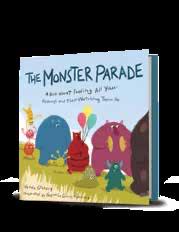
In this simple book, the little ones also learn that they can observe their feelings mindfully, that they donʼt have to jump in and join the feeling parade when it is happening. Instead, they can stay aware and be in the present moment by feeling their feet on the ground, etc. These are such vital life skills. A child who cultivates these habits will surely develop strength, resilience and inner serenity even in the face of turbulence in adulthood.
| All books are available at Awareness Place stores.
read
The Cow in the Parking Lot - A Zen Approach to Overcoming Anger
S$25.40 Zen Wisdom for the Anxious - Simple Advice from a Zen Buddhist Monk
S$26.90 The Monster Parade: - A Book About Feeling All Your Feelings and Watching Them Go By Wendy OʼLeary Illustrated by Noemie Gionet Landry S$24.90
By Leonard Scheff and Susan Edmiston
33 no.55 | jan-apr 2023 |
what’s new sacred prayer wheel Elegant,
Text: Esther Thien
Iyou have been experiencing increasing turbulent energies in the past year and wish to start the New Year with a sacred ornament that is pleasing and reminds you constantly of the Buddha Dharma and the Triple Gem, you can check out the liuli crystal prayer wheel.
Elegantly crafted with meticulous attention paid to fine details, this prayer wheel is intricately fashioned with engraved motifs and scriptures of the Heart Sutra. It is artistic yet meritorious as you slowly spin the wheel and recite the Refuge Prayer, or the name of Guanyin Bodhisattva in homage and reverence.
Available in three sizes, the smallest version weighs about 5kg and measures 10.5cm x 6cm x 20cm. The medium weighs about 7kg, measuring 18.5cm x 8.5cm x 26cm. while the largest one weighs about 10kg and measures 29cm x 11cm x 41cm.
To find out more, please call Awareness Place stores at 6337 7582 or 6452 1732.

no.55 | jan-apr 2023 34 |
ar a
• CEREMONY | PRAYERS
Lunar 27th Great Compassion Repentance PujaOnline Light Offering
18 Jan | 17 Feb | 18 Mar | 17 Apr 2023
10am – 11.30am
Venue: Hall of Great Compassion Fee: $8 (1 candle with 1 sponsor's name) Registration: kmspks.org (online) Enquiry: 6849 5326 | sed@kmspks.org
Offering to Buddha and Celestial Beings Puja
1 Jan 2023 | 6am – 8am
Venue: Hall of Great Compassion Fee: 1) Online Puja Sponsorship: $10, $20, $50
2) Confectionery Offering Items: $38 Registration: kmspks.org (online) Enquiry: 6849 5326 | sed@kmspks.org
Offering to Buddha and Celestial Beings Puja (TBC) 30 Jan 2023 | 6am – 8am
Venue: Hall of Great Compassion Registration: kmspks.org (online) Enquiry: 6849 5300
Chinese New Year Puja - Xiao Zai 4 Feb 2023 | 10am – 11am
Venue: Hall of Great Compassion Enquiry: 6849 5300
Chinese New Year Puja - Bu Yun 5 Feb 2023 | 6.30am – 1.30pm

Venue: Hall of No Form Enquiry: 6849 5300
Online Pledge of Avalokiteshvara Bodhisattva Name Chant 20 Feb – 21 Mar 2023 Enquiry: 6849 5326 | sed@kmspks.org Recite the sacred chant of “Namo Guan Shi Yin Pu Sa”. Submit your count on our website at kmspks.org
Birthday of Avalokiteshvara Bodhisattva Puja 10 Mar 2023 | 10am – 11.30am
Venue: Hall of Great Compassion Enquiry: 6849 5326 | sed@kmspks.org
The 4 Noble Truths (English Dhamma Talk) 12 Feb 2023 | Sunday | 7.30pm – 9pm
Venue: Hall of No Form Registration: kmspks.org (online) Enquiry: 6849 5346 | meditationhall@kmspks.org
ed a n
Alms & Sangha Offering
1 Jan 2023 | 8am – 12pm
Venue: Hall of Great Compassion
Ven.Hong Choon Memorial Hall | Level 2 | Dining Hall Sangha Offering Package: $60, $188, $388 Registration: www.kmspks.org (online) Enquiry: 6849 5333 | sed@kmspks.org
The Grand Diamond Gem Repentance Ceremony 1 Jan 2023 | 1.30pm – 4.30pm
Venue: Hall of Great Compassion Enquiry: 6849 5326 | sed@kmspks.org
Online Pledge of Maitreya Buddha Name Chant 6 Jan – 5 Feb 2023 Enquiry: 6849 5326 | sed@kmspks.org Recite the sacred chant of “Namo Dang Lai Xia Sheng Mi Le Fo”. Submit your count on our website at kmspks.org
Chinese New Year Bell Resonance
21 Jan – 22 Jan 2023 | 9pm – 1am
Venue: Hall of Great Compassion Enquiry: 6849 5326 | sed@kmspks.org
Buddhist Etiquette Class (TBC)
4 Mar 2023 | 9am – 11.30am
Venue: Ven. Hong Choon Memorial Hall | Level 3 | Classroom Registration: kmspks.org (online) Enquiry: 6849 5326 | sed@kmspks.org
Relaxation and Mindfulness Meditation
Feb 2023 | New run in April 2023 7.30pm – 9pm | 4pm – 5.30pm
Venue: Prajna Meditation Hall Fee : $30 per class
Retreat by Foreign Retreat Master 9 Feb – 15 Feb 2023 (Time TBC) Venue: Prajna Meditation Hall Fee: (TBC)

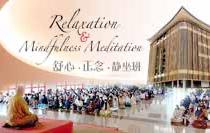
Weekly Meditation Group Practice Class By Venerable Chuan Hang Mar 2023 | 9.30am – 11am
Venue: Prajna Meditation Hall Fee: $30
Registration:
1. Online: www.kmspks.org
2. Reception Office at Kong Meng San Phor Kark See Monastery | 9.00am – 4.00pm (Lunch Break : 11.30am – 12.30pm) Enquiry: 6849 5346 | meditationhall@kmspks.org
3 Refuge 5 Precepts Preparatory Class Mandarin (TBC)
4 Mar 2023 | 1pm – 3pm
Venue: Ven. Hong Choon Memorial Hall | Level 3 | Classroom

Registration: kmspks.org (online) / Reception Office Enquiry: 6849 5326 | sed@kmspks.org
3 Refuge 5 Precepts Ceremony (TBC)
5 Mar 2023 | 12pm – 3pm
Venue: Hall of No Form
Registration: kmspks.org (online) / Reception Office Enquiry: 6849 5326 | sed@kmspks.org
e le
• CHILDREN
Children’s Art – Colours of Life
11 Mar – 20 May 2023 (no class 22 Apr) | Sat | 2pm – 3.30pm
Venue: Awareness Hub Fee: $62 per pax for 10 sessions (excluding art materials)
Enquiry: 6336 5067 | awarenesshub@kmspks.org
• ART
Seniors CNY Art

4 Jan | 11 Jan | Wed | 1pm – 2.30pm
Chinese New Year Wish Fulfilling Lanterns Lantern Offering
21 Jan – 5 Feb 2023 | 7pm – 10pm
Venue: Hall of Great Compassion & Hall of Universal Brightness
Fee: 1) $50 per Lantern Displayed at HOGC
2) $338 per Lantern Displayed at HOUB
Registration: kmspks.org (online) Enquiry: 6849 5333 | sed@kmspks.org
Chinese New Year Wish Fulfilling Blessing Puja 29 Jan 2023 | 10am – 11am

Venue: Hall of Great Compassion Enquiry: 6849 5326 | sed@kmspks.org
•
TALKS | WORKSHOPS | COURSES
2023 BUDDHISM LECTURE SERIES
Extra-Ordinary Happiness, a study of Sigālovāda Sutta and Dīghajāṇu Sutta 15, 22, 29 Mar | 12, 19, 26 Apr | 3, 10, 17, 24 May 2023 | Wed | 7.30pm – 9.00pm
Venue: Ven. Hong Choon Memorial Hall Fee: $35
Registration: kmspks.org (online) Enquiry: 6849 5345 | ded@kmspks.org
Venue: Awareness Hub Fee: Free | Registration required | Donations are welcomed Enquiry: 6336 5067 | awarenesshub@kmspks.org
calendar
35 no.55 | jan-apr 2023 |
Programmes, dates and venues are subject to change. Details are correct at the time of printing. Please visit kmspks.org for up-to-date information.
Zentangle Basics
5 & 12 Mar | Sun | 3pm – 5pm
Venue: Awareness Hub Fee: $62 per pax for 2 sessions
Material Fee: $8 per pax (payable to instructor) Enquiry: 6336 5067 | awarenesshub@kmspks.org
Introduction to Watercolour Painting
30 Apr & 7 May | Sun | 10am – 12pm
Venue: Awareness Hub Fee: $62 per pax for 2 sessions
Material Fee: $5 per pax (payable to instructor) Enquiry: 6336 5067 | awarenesshub@kmspks.org
Watercolour Painting
14 May | Sun | 10am – 12pm
Venue: Awareness Hub Fee: $32 per pax
Material Fee: $3 per pax (payable to instructor) Enquiry: 6336 5067 | awarenesshub@kmspks.org
• WELLNESS
Online Wellness Series – The Ins and Outs of
Nutritional Supplements
18 Mar | Sat | 1pm – 5pm
Venue: Online Zoom Fee: $95 per pax
Self Discovery Series Through LEGO® SERIOUS PLAY®
• Session 1 - Precious 2 Apr 2023 | Sun
• Session 2 - Relationship 16 Apr 2023 | Sun
• Session 3 - Self Care 30 Apr 2023 | Sun
Time: 2pm – 4pm
Venue: Awareness Hub Fee: $32 per pax per session Enquiry: 6336 5067 | awarenesshub@kmspks.org
• YOGA
Hatha Yoga for Beginners
• 24 Feb – 5 May 2023 (no class 7 Apr) | Fri |
10.30am – 12pm
• 28 Jan – 1 Apr 2023 | Sat | 6.30pm – 8pm
• 8 Apr – 17 Jun 2023 (no class 22 Apr) | Sat |
6.30pm – 8pm
Fee: $182 per pax for 10 sessions (Walk-in $26 per lesson)
Hatha Yoga
• 20 Mar – 29 May (no class 1 May) | Mon |
6.45pm – 8.15pm
• 7 Mar – 9 May | Tue | 10.30am – 12.00pm
• 28 Jan – 1 Apr | Sat | 9.30am – 11am
• 8 Apr – 17 Jun (no class 22 Apr) | Sat | 9.30am – 11am
Fee: $182 per pax for 10 sessions (Walk-in $26 per lesson)
• 8 Feb – 12 Apr | Wed | 6.30pm – 7.45pm
• 19 Apr – 21 Jun | Wed | 6.30pm – 7.45pm
• 18 Jan – 29 Mar (no class 25 Jan) | Wed |
7.45pm – 9pm

• 5 Apr – 7 Jun | Wed | 7.45pm – 9pm
Fee: $172 per pax for 10 sessions (Walk-in $24 per lesson)
Gentle Hatha Yoga
• 7 Mar – 9 May | Tue | 2.30pm – 4pm
• 27 Jan – 31 Mar | Fri | 2.30pm – 4pm
• 14 Apr – 23 Jun (no class 2 Jun) | Fri | 2.30pm
– 4pm
Fee: $162 per pax for 10 sessions (Walk-in $23 per lesson)
Digestive Health and Meal Planning (Bilingual)

Interactive Online Nutrition Class
16 Apr 2023 | Sun | 2pm – 5pm
Venue: Online Zoom Fee: $42 per pax
Enquiry: 6336 5067 | awarenesshub@kmspks.org
Managing Menopause through Diet and Natural Remedy (Bilingual) - Interactive Online Nutrition Class
12 Mar 2023 | Sun | 2pm – 5pm
Venue: Online Zoom Fee: $42 per pax
Enquiry: 6336 5067 | awarenesshub@kmspks.org
Short-Course in Mindful Self-Compassion
6 Jan - 17 Feb 2023 (no class 20 Jan) | Fri |
7.30pm – 9pm
Venue: Awareness Hub
Fee: $185 per pax for 6 sessions
Enquiry: 6336 5067 | awarenesshub@kmspks.org
Yin Yoga

• 7 Feb – 11 Apr | Tue | 6.30pm – 7.45pm
• 18 Apr – 20 Jun | Tue | 6.30pm – 7.45pm
Fee: $172 per pax for 10 sessions (Walk-in $24 per lesson)
Relax & Recharge Yoga

• 21 Feb – 25 Apr | Tue | 12pm – 12.50pm
Fee: $150 per pax for 10 sessions (Walk-in $20 per lesson)
Chair Yoga
• 17 Mar – 26 May (no class 7 Apr) | Fri | 12.30pm – 1.30pm
Fee: $162 per pax for 10 sessions (Walk-in $23 per lesson)
Yoga for Diabetes
• 23 Feb – 27 Apr | Thur | 10.30am – 11.30am
• ENVIROMENTALISM

On sale at Gratitude Shop
2L pack : $5
Gratitude Shop
Monday – Sunday | 10am – 3pm
Venue : Ven.Hong Choon Memorial Hall | Level 2 | Outside Dining Hall
Enquiry : 6849 5300 | gratitude@kmspks.org
Please check our website for further updates at kmspks.org/services/gratitude-corner/
Mobile Kiosk
Date: 18 Jan | 17 Feb | 18 Mar | 5 Apr | 17 Apr 2023
*Dates are subject to change.
Time: 9am – 2pm
Location: Diagonally opposite Gratitude Shop (at Lift Lobby)
Enquiry : 6849 5300 | gratitude@kmspks.org
Please check our website for further updates at kmspks.org/services/gratitude-corner/
• COMMUNITY
Food Ration

8 Jan | 19 Mar | 16 Apr | 9am – 11.30am
*Dates are subject to change.
Venue: Kong Meng San Phor Kark See Monastery Enquiry: 6849 5300 | community@kmspks.org
Hair for Hope 2023
1 May 2023 | 12pm – 2pm
Venue: Hall of No Form Enquiry: 6849 5300 | community@kmspks.org
Free Community Tuition 2023 Jan – Oct 2023
*Subject to the availability of tutors and students
Venue: Online via Skype Enquiry: 6849 5300 | community@kmspks.org
Mindfulness-Based Stress Reduction


24 Feb – 21 Apr 2023 | Fri | 7pm – 9.30pm
7 Apr 2023 | Fri | 9.30am – 4pm
Venue: Awareness Hub
Fee: $350 per pax for 8 sessions + 1 Full Day Retreat (Subsidised Rate)
Enquiry: 6336 5067 | awarenesshub@kmspks.org
Fee: $122 per pax for 10 sessions (Walk-in $16 per lesson)
For All Yoga Class
Venue: Awareness Hub Enquiry: 6336 5067 | awarenesshub@kmspks.org
Blood Donation Drive 2023

19 Feb | 14 May 2023 | 9am – 3pm
Venue: Hall of No Form
Enquiry: Singapore Red Cross at 6220 0183 or visit redcross.sg
Ven Hong Choon Museum
Venue: Venerable Hong Choon Memorial Hall l Level 3 l Free Admission
*TBC = To Be Confrmed
kmspks kmspks_monastery
Programmes, dates and venues are subject to change. Details are correct at the time of printing. Please visit kmspks.org for up-to-date information.
no.54 | sep-dec 2022 | jan-apr 2023 36 |






































































